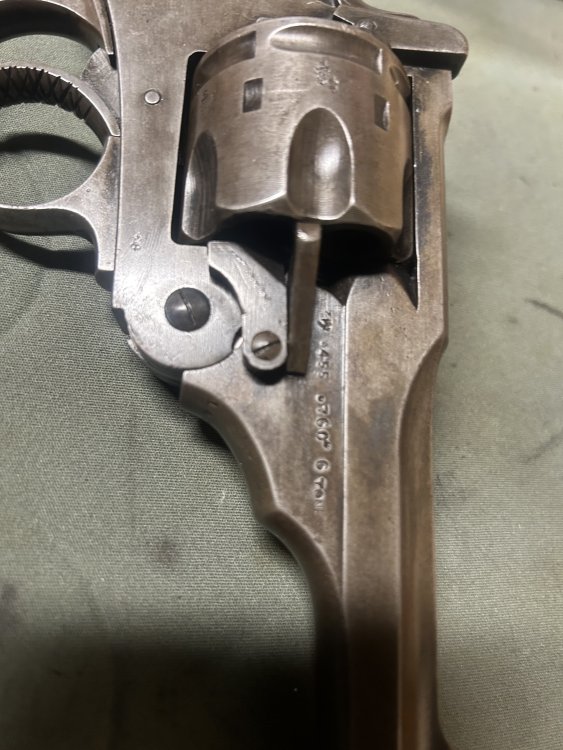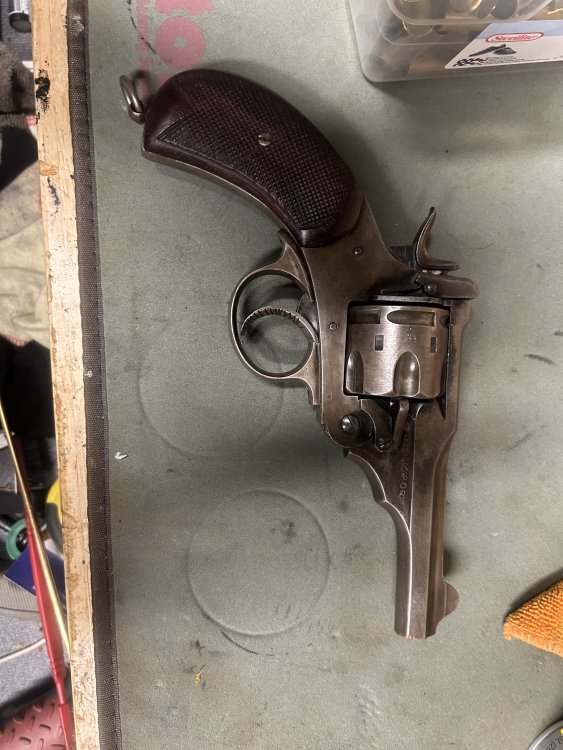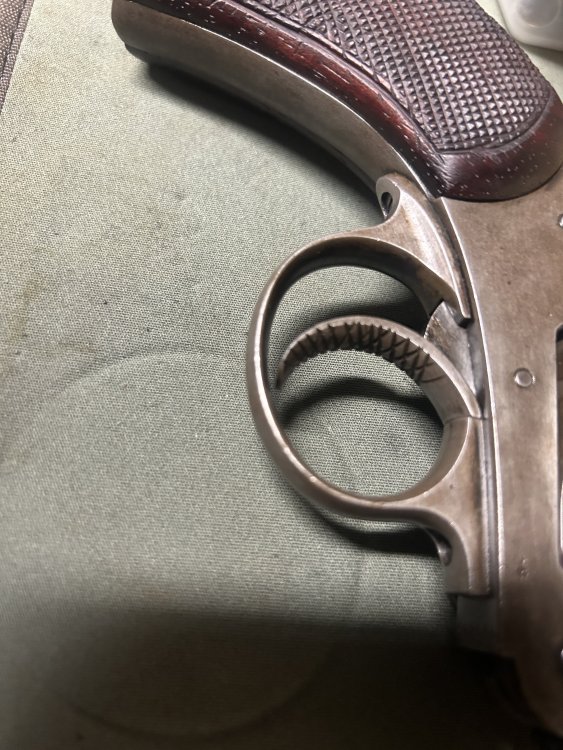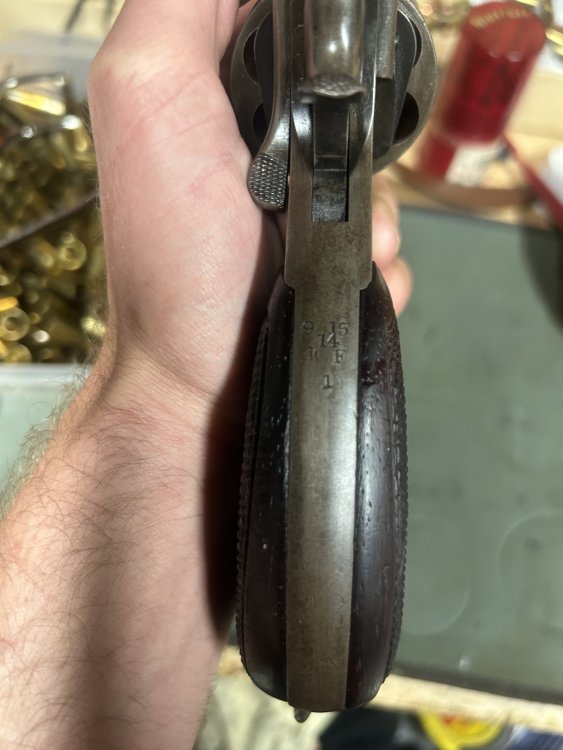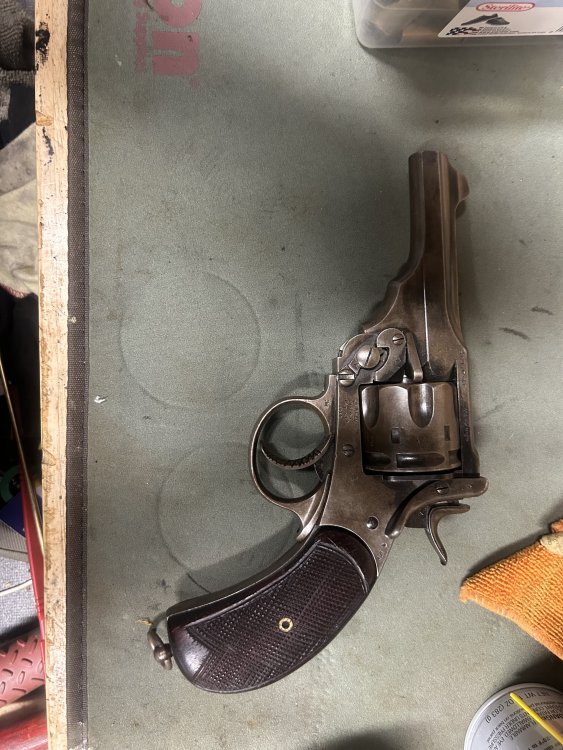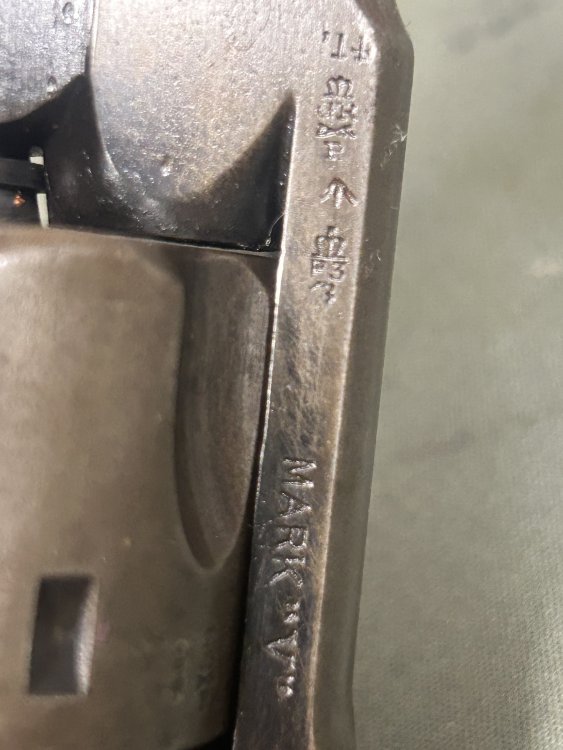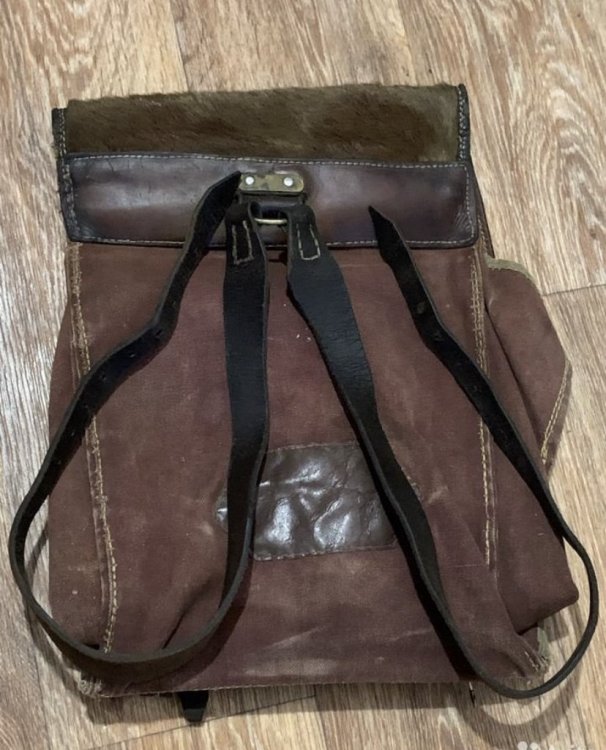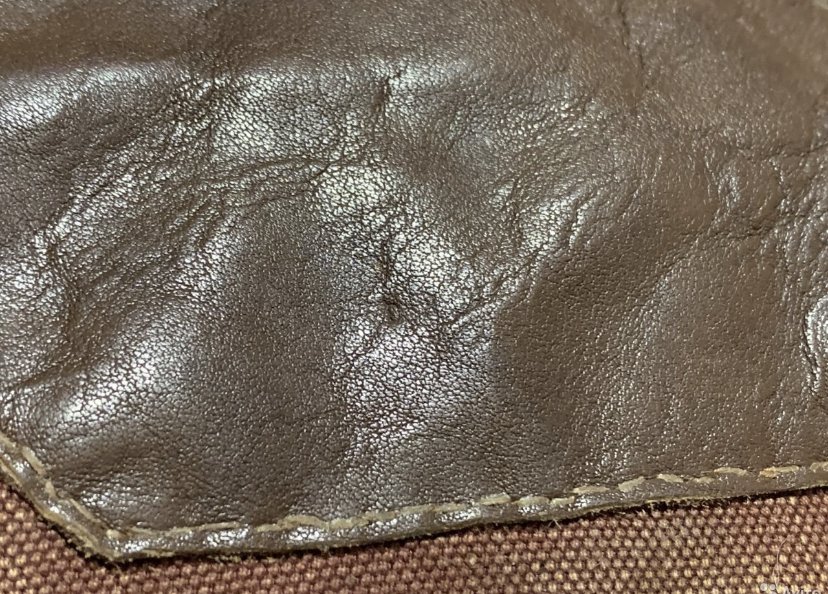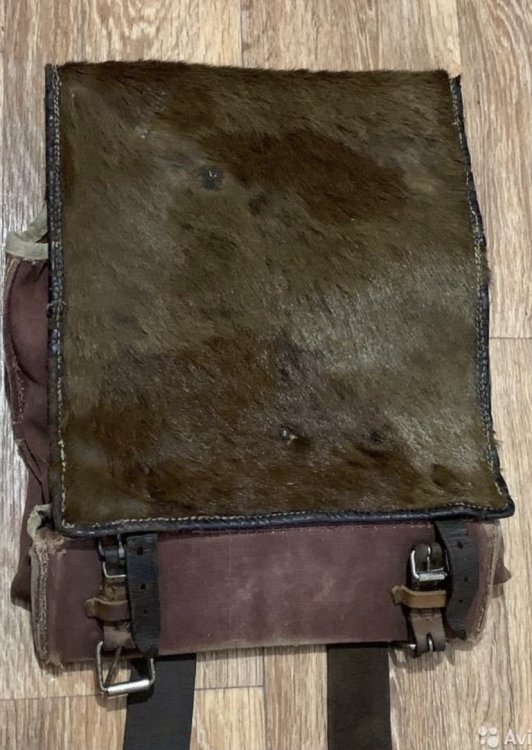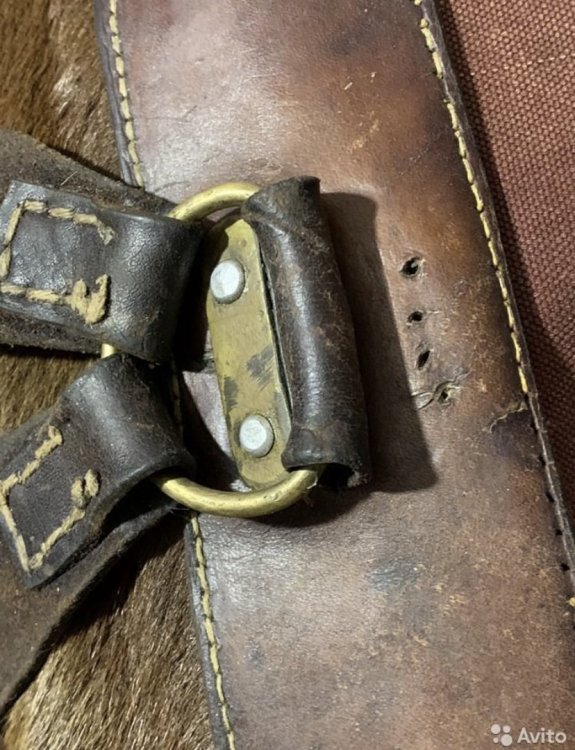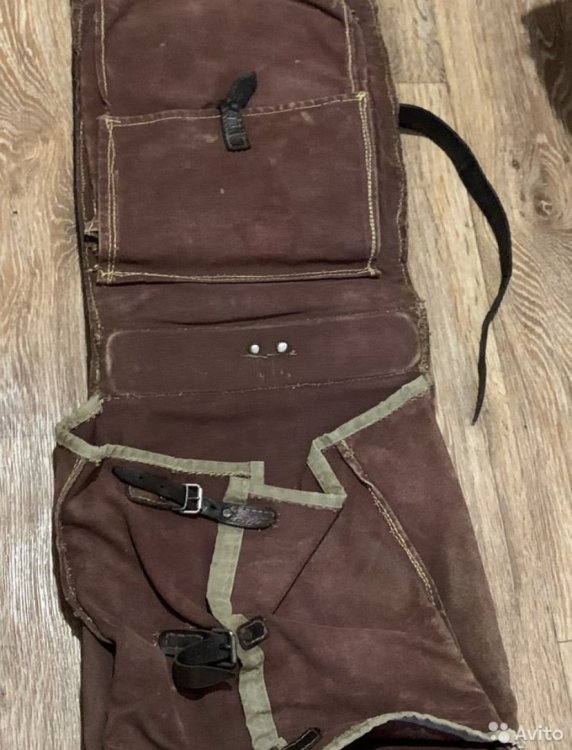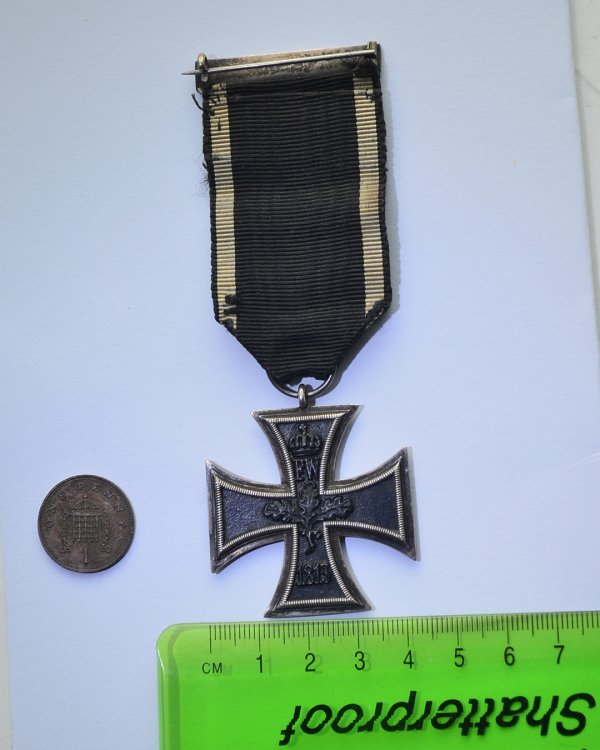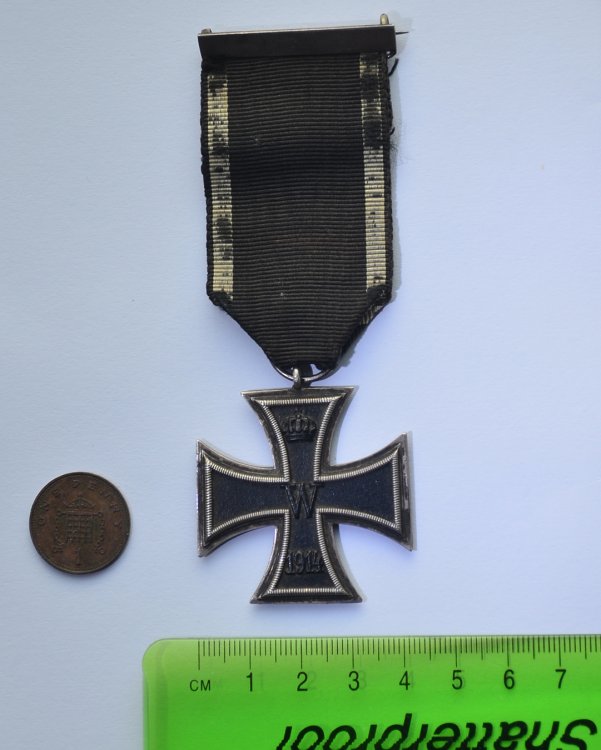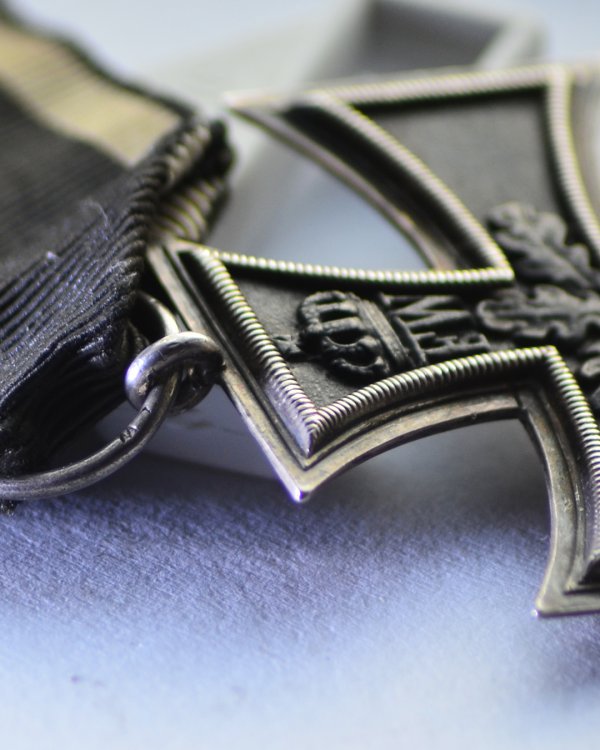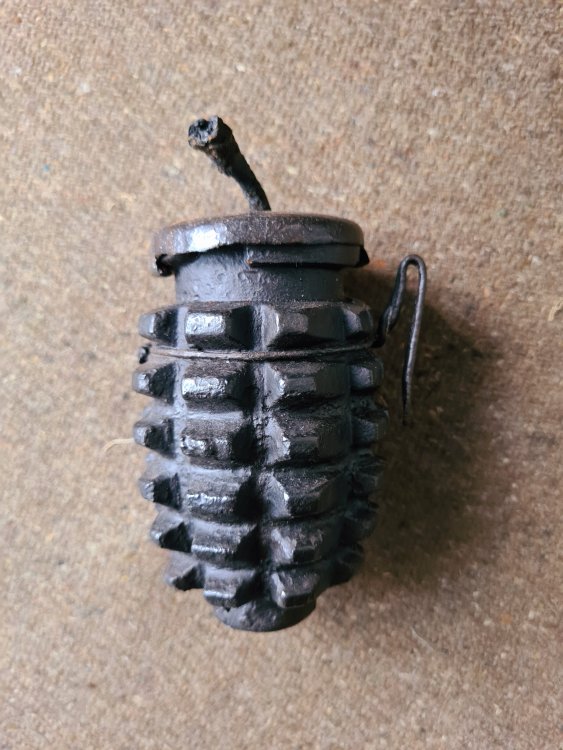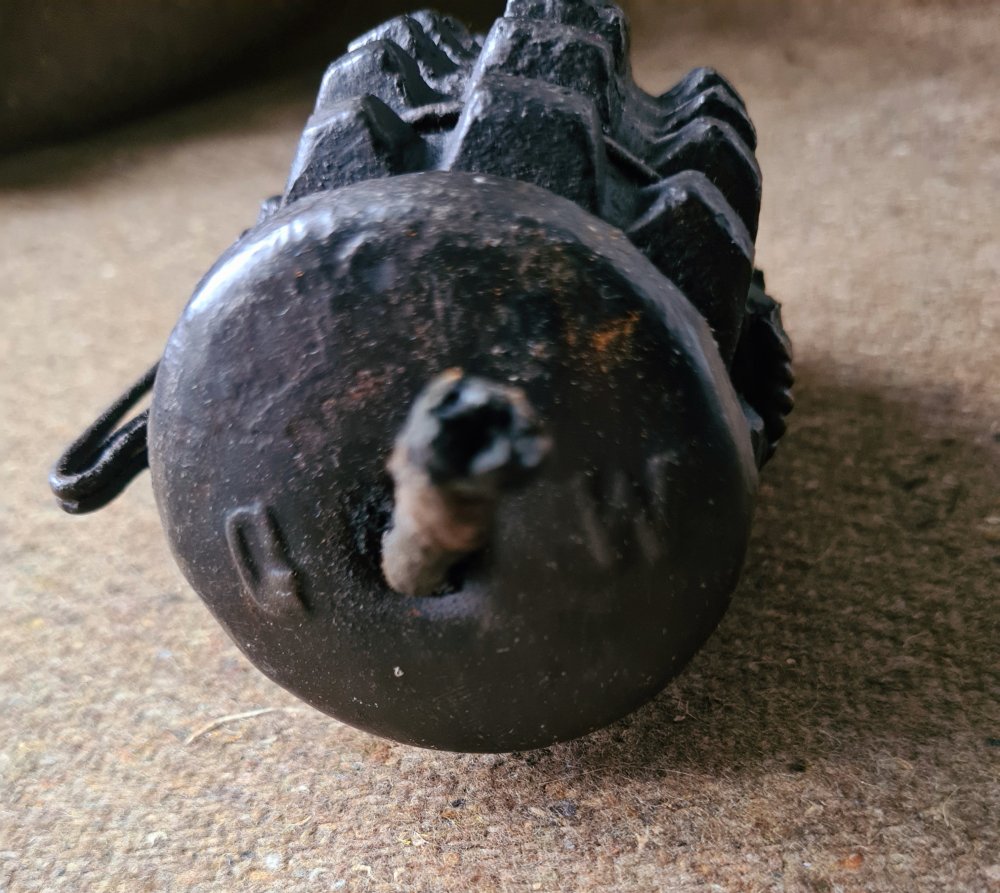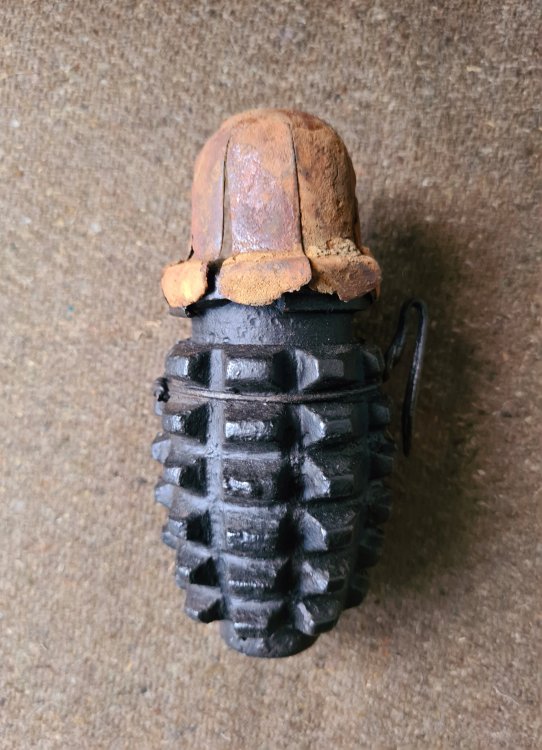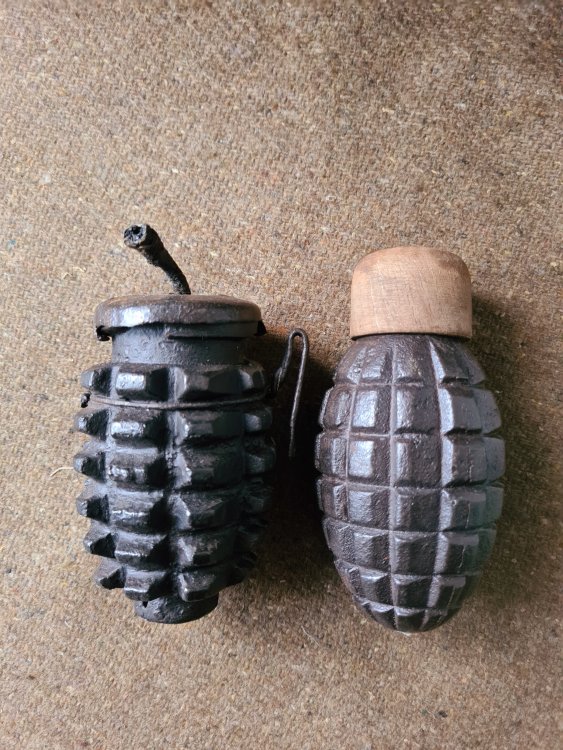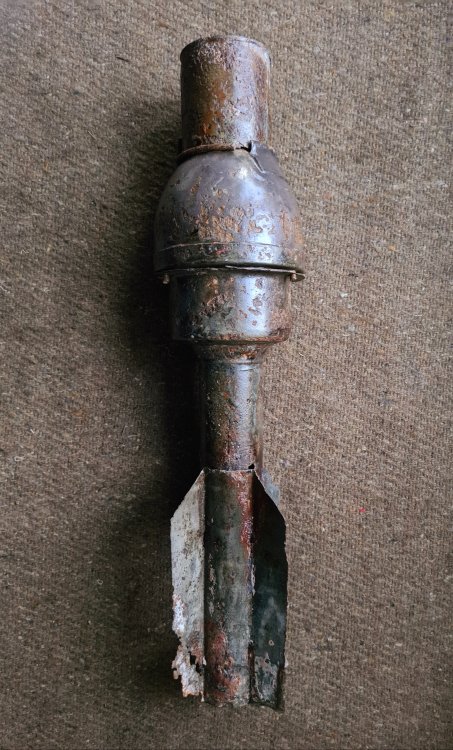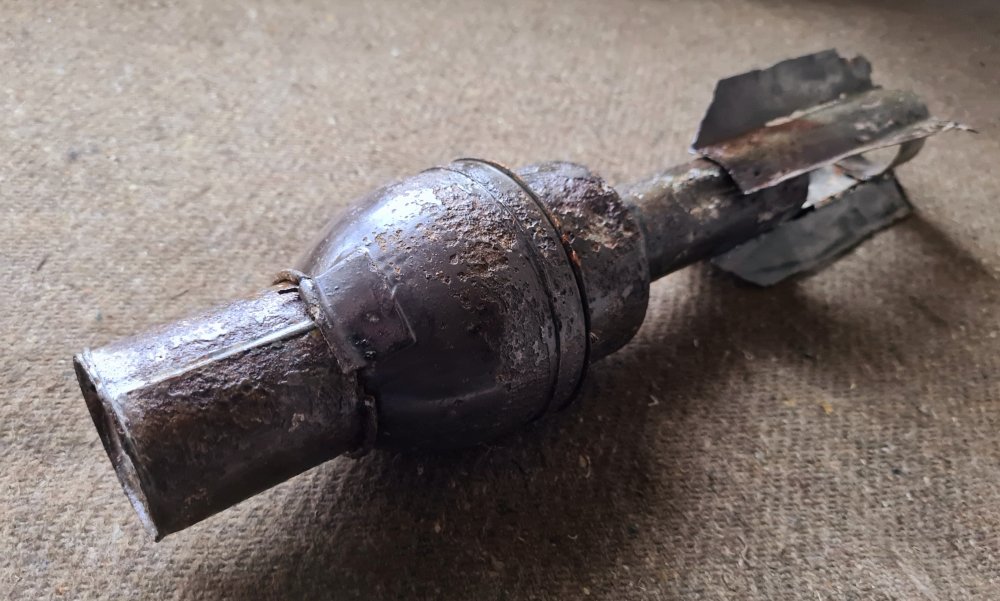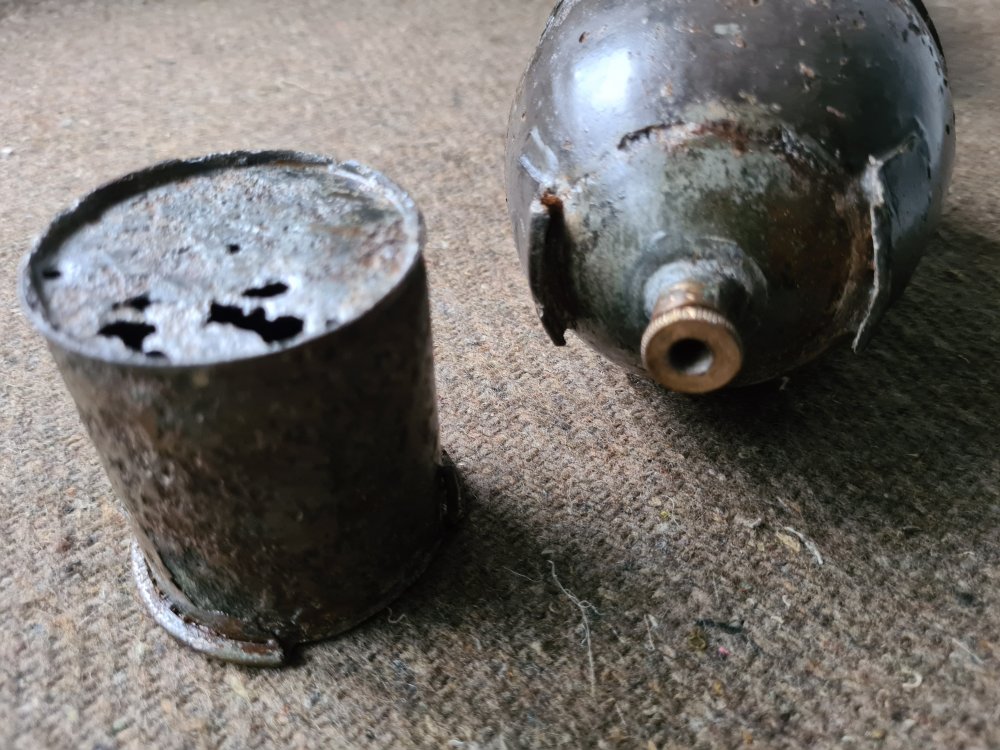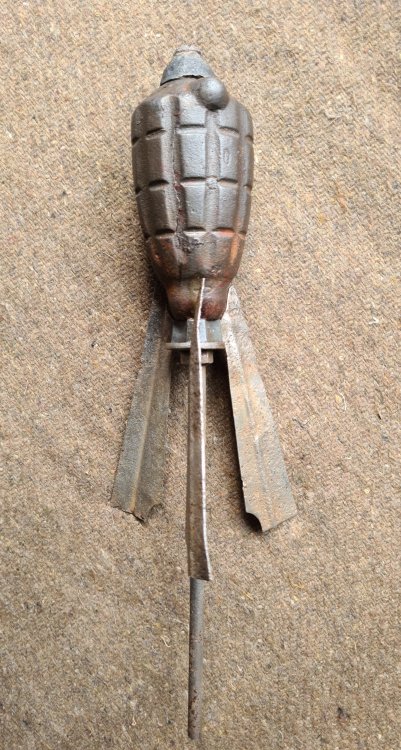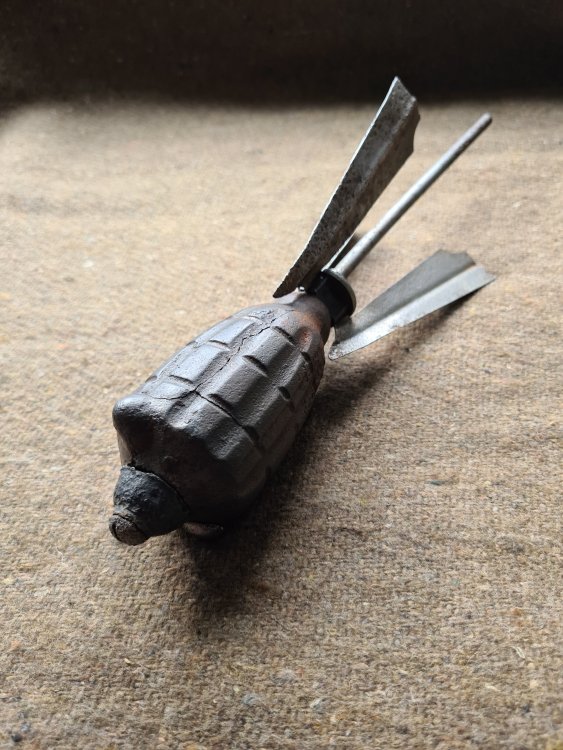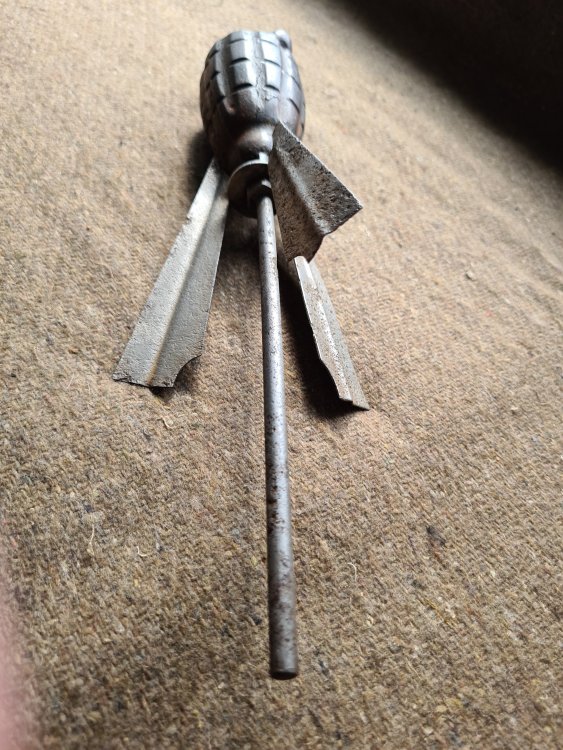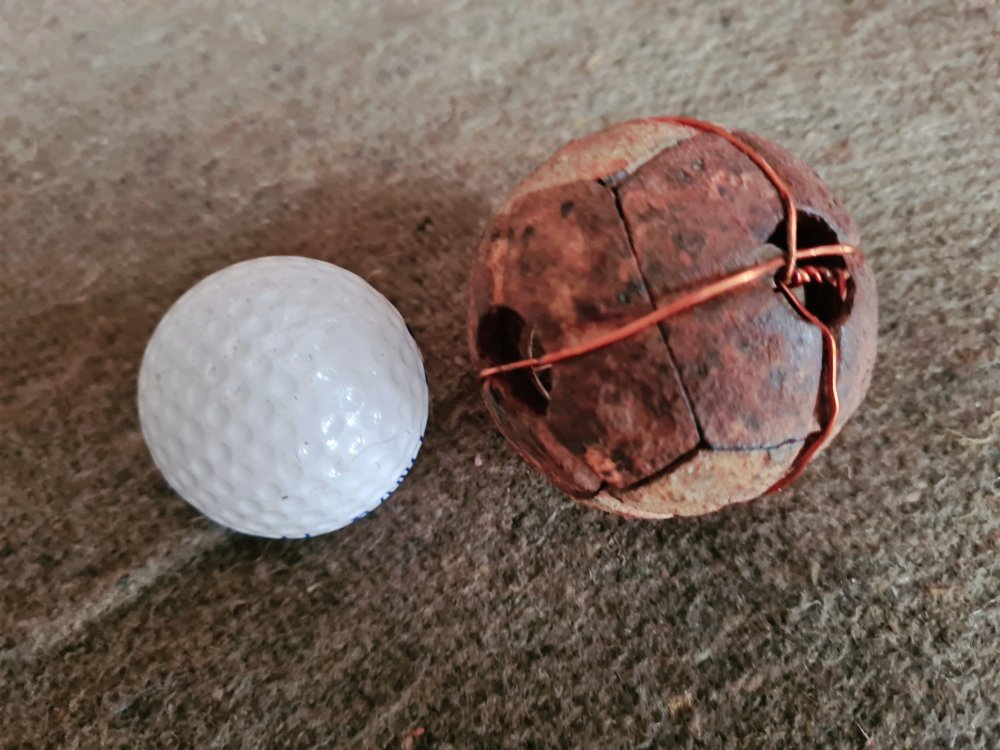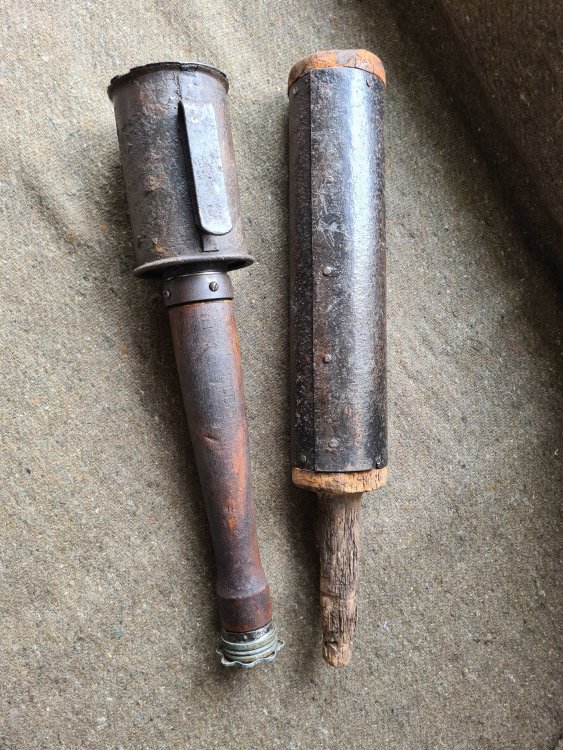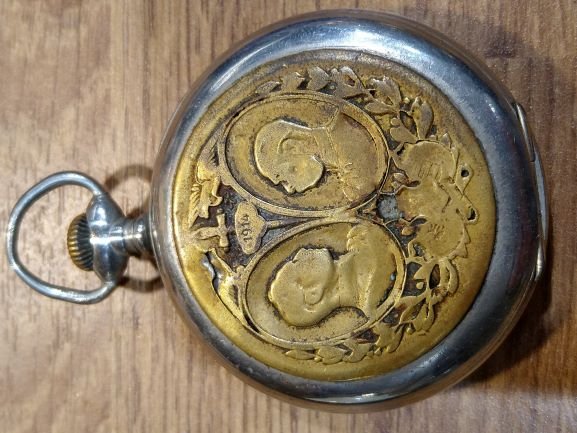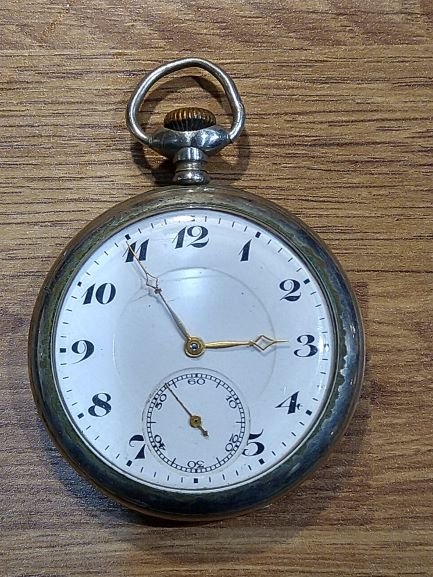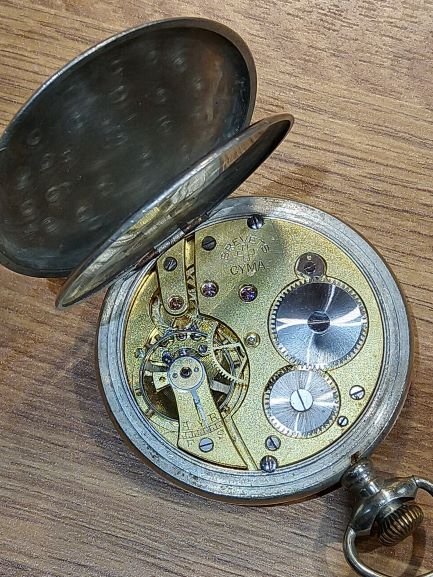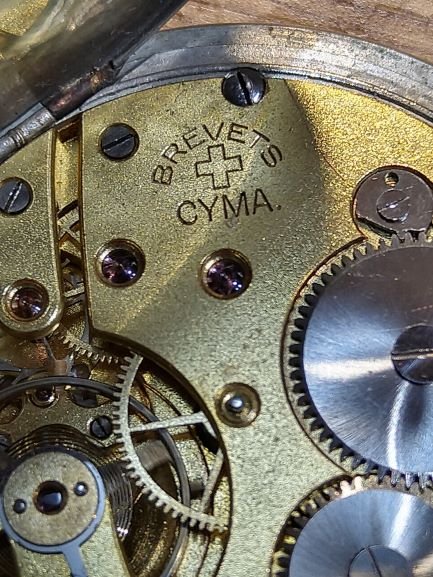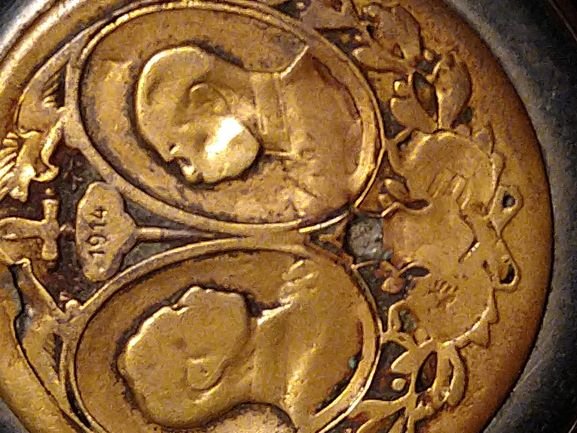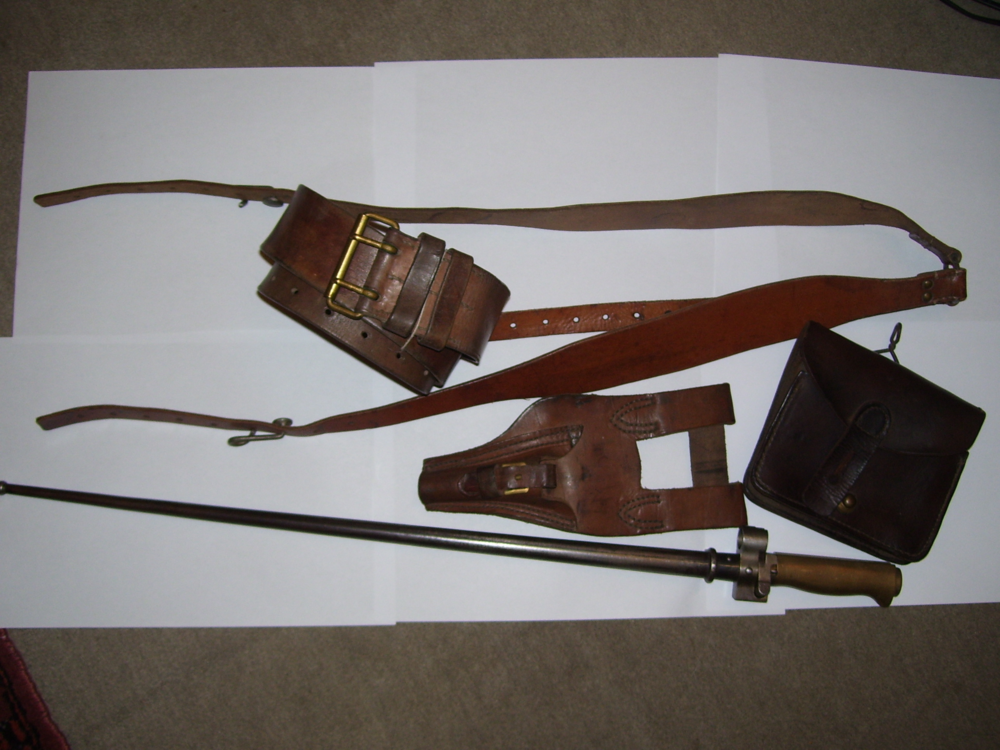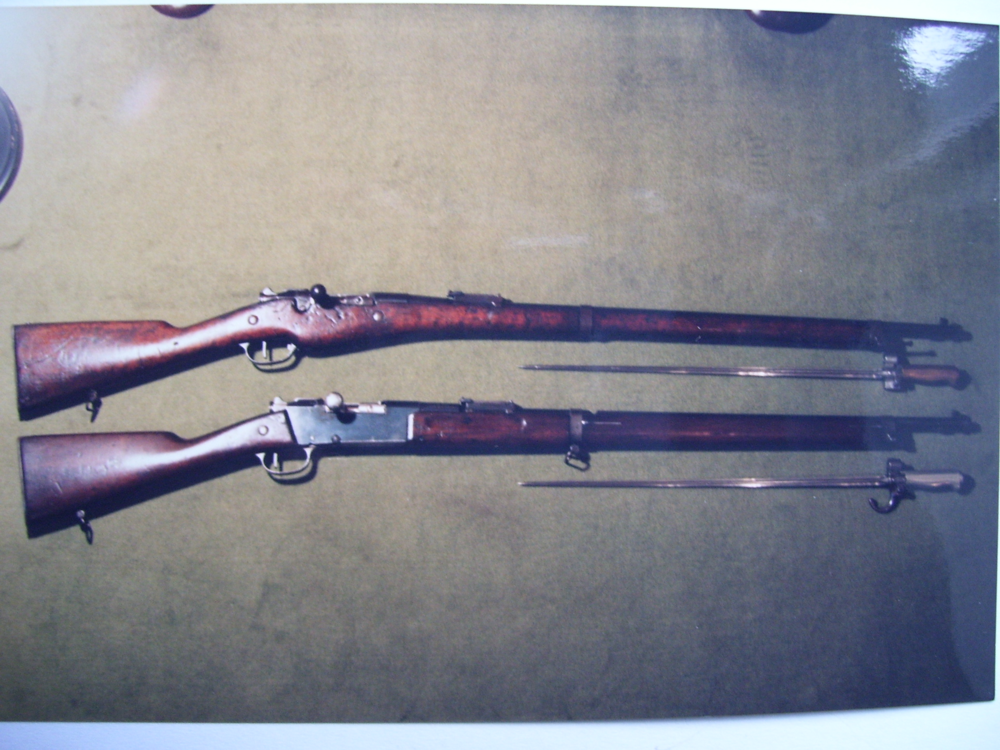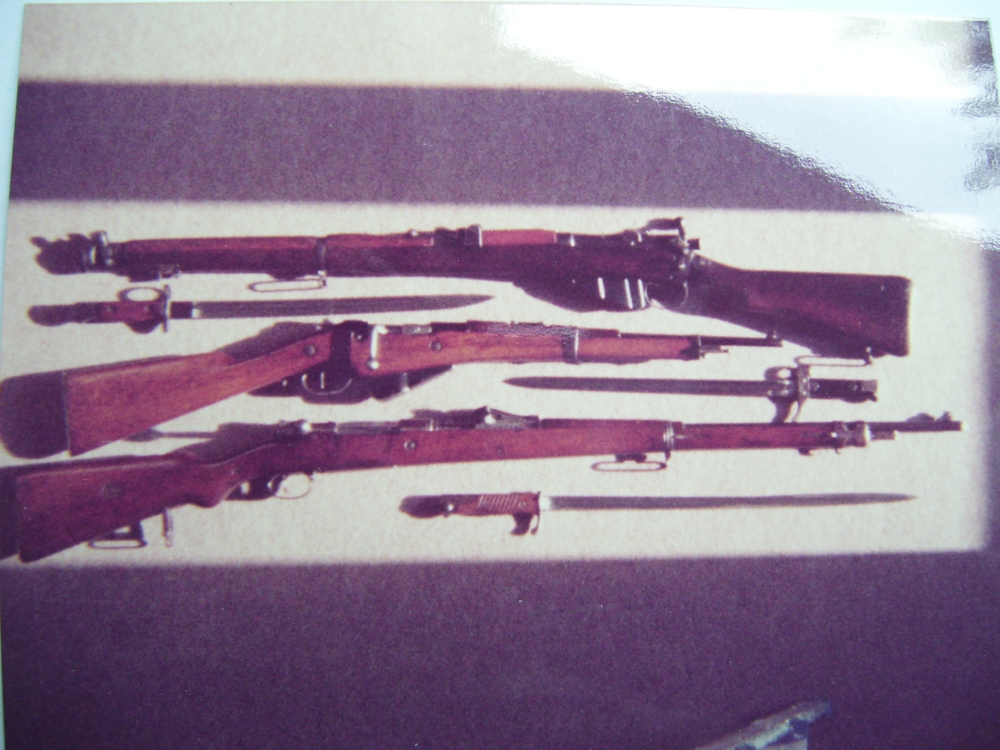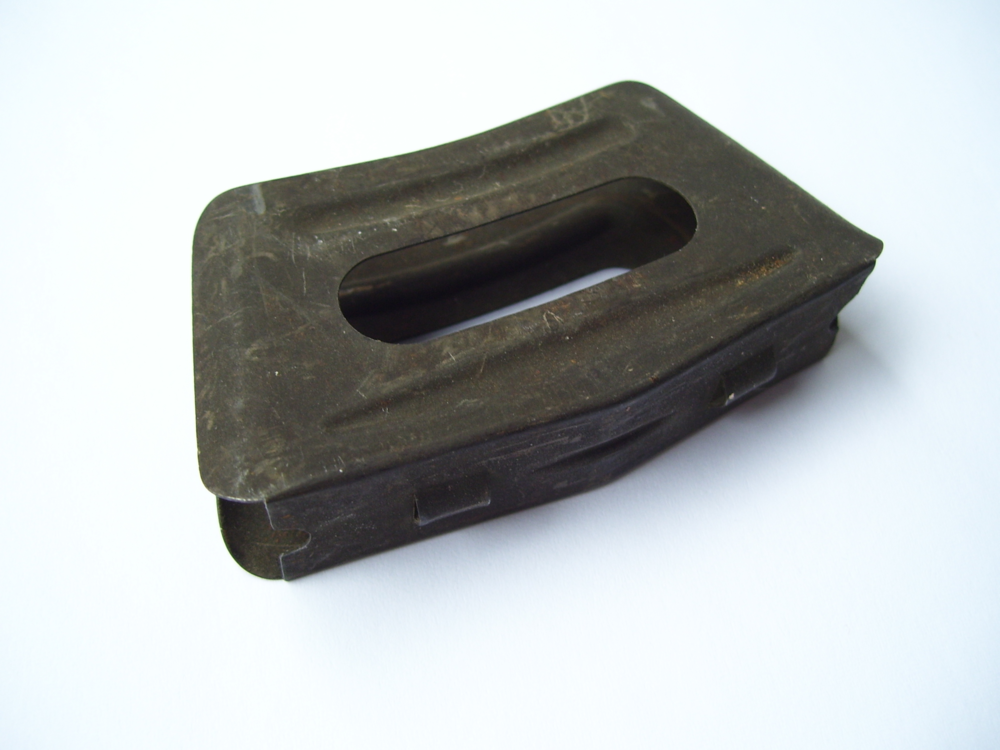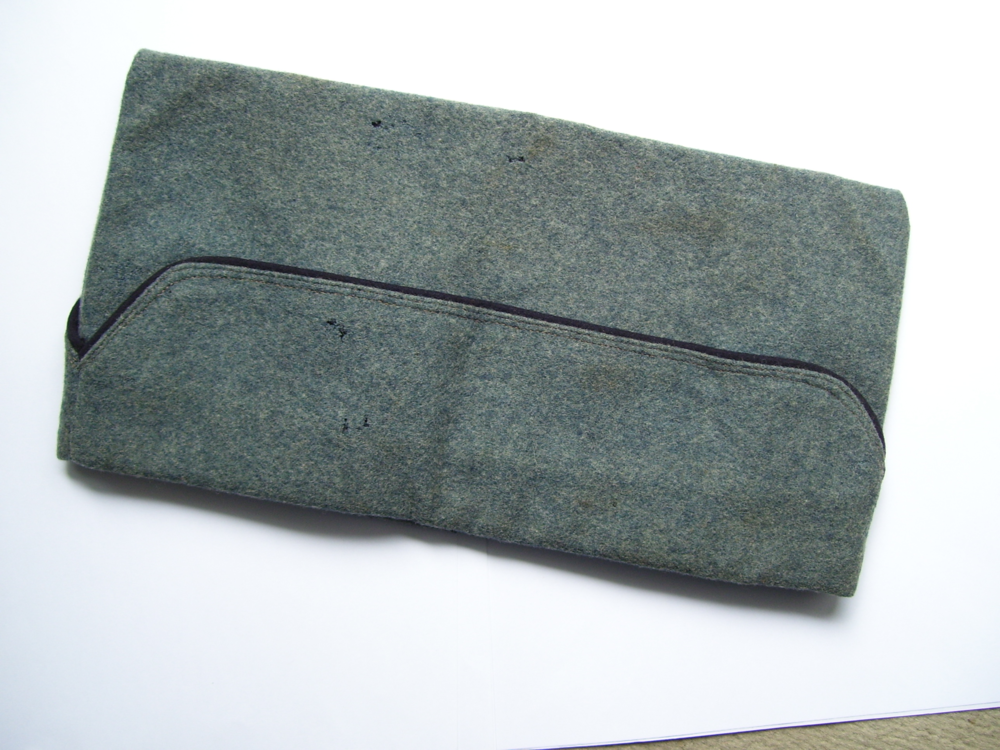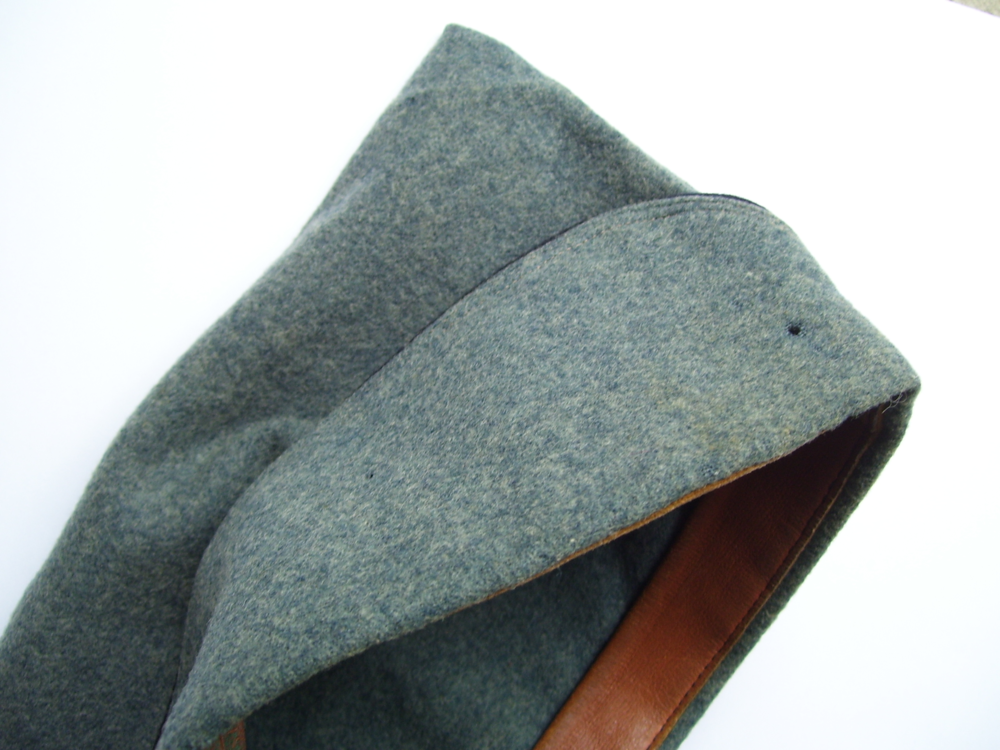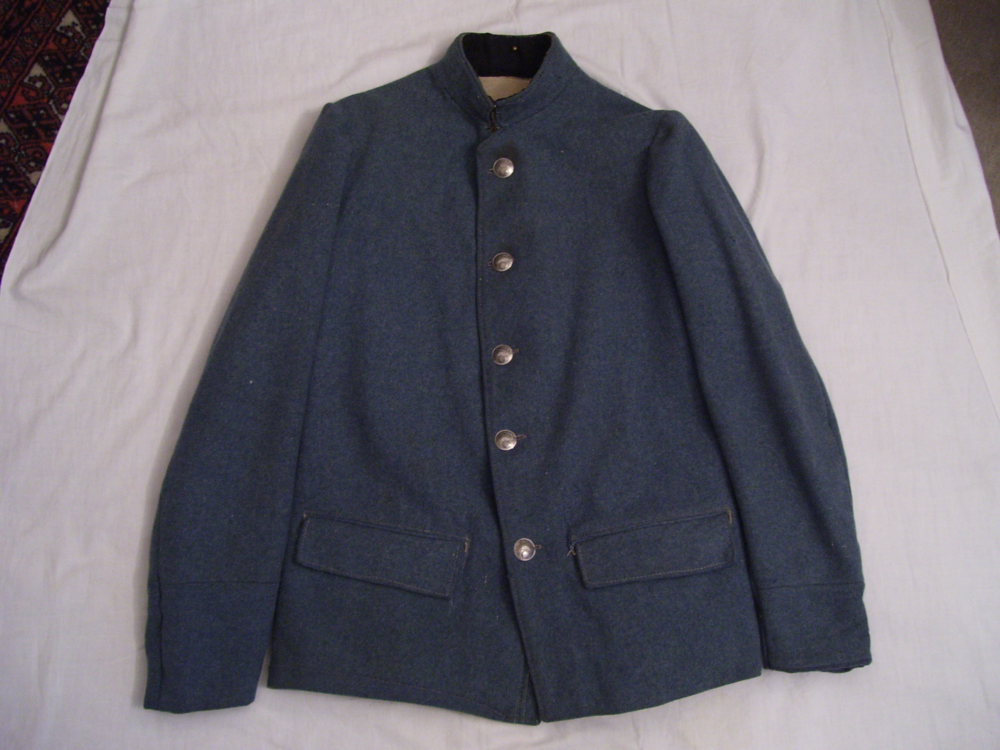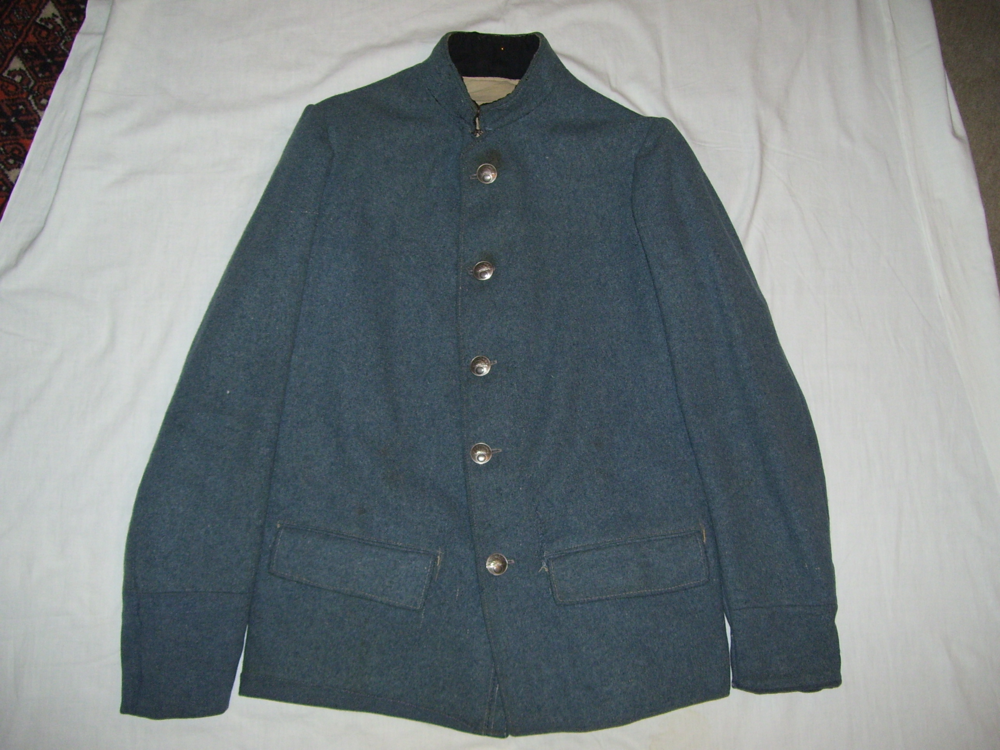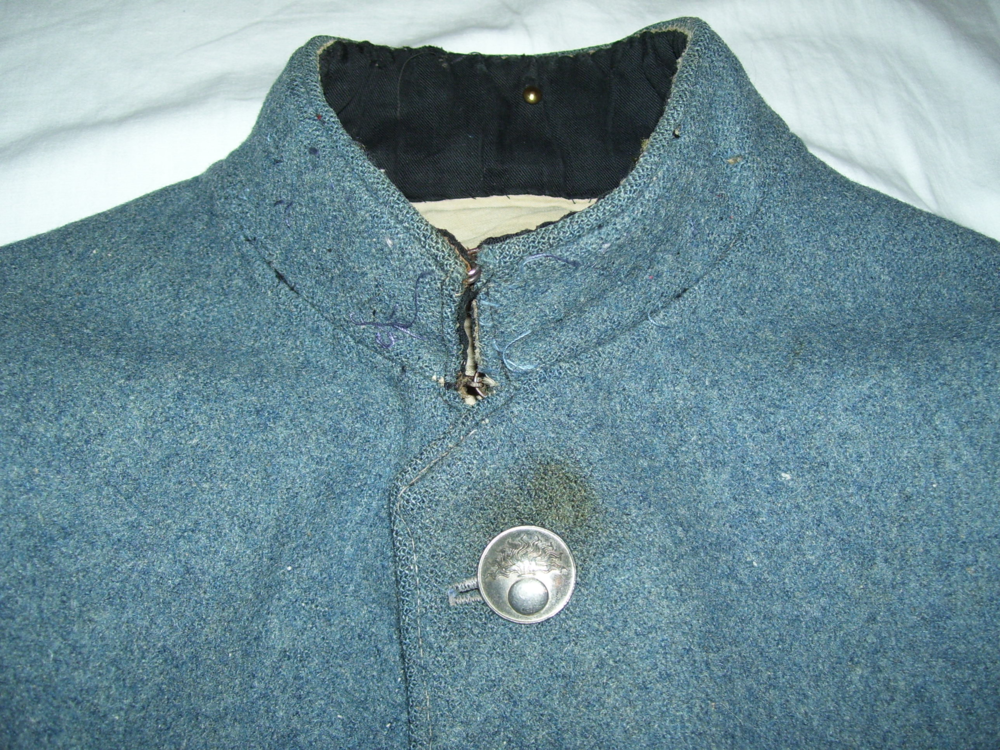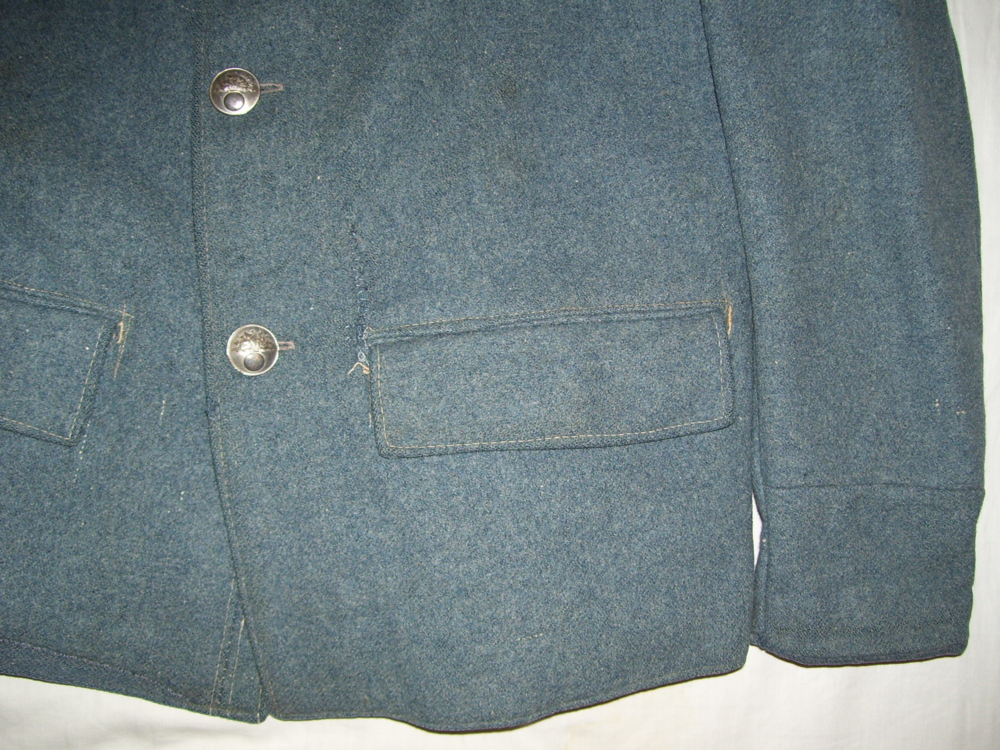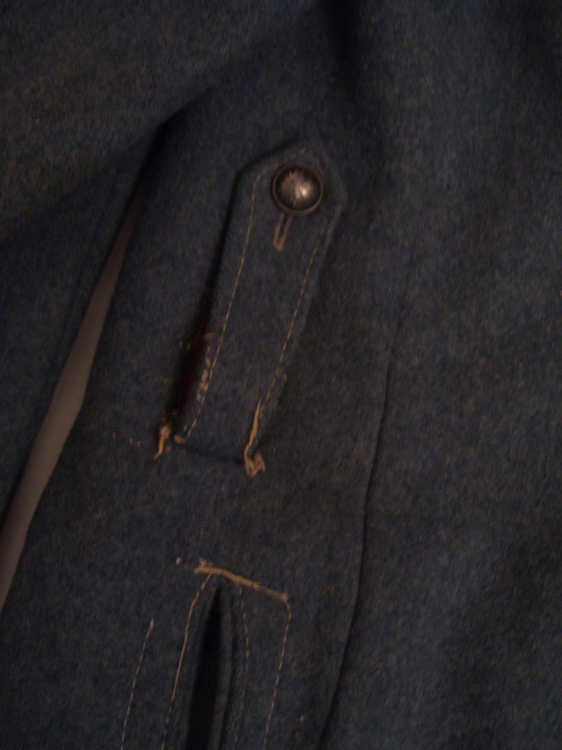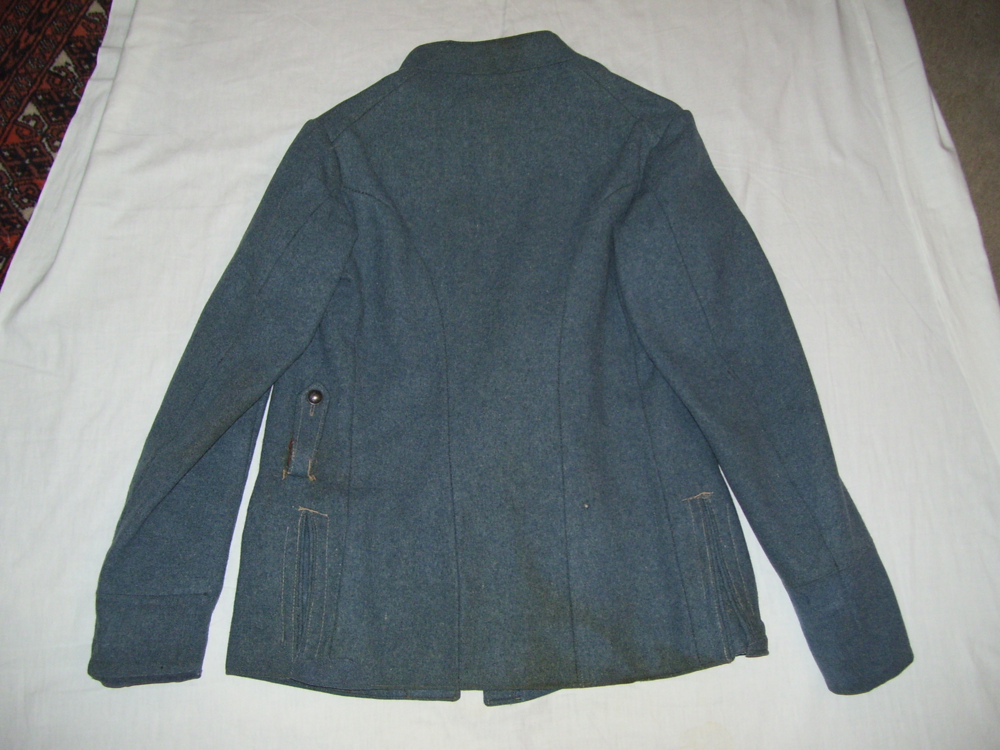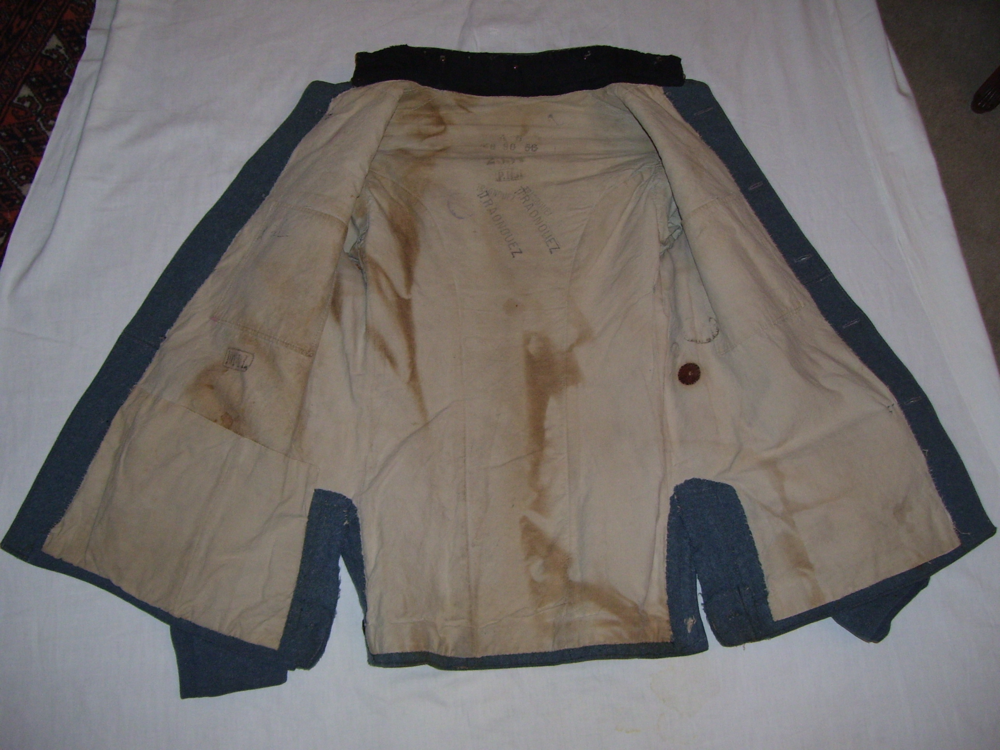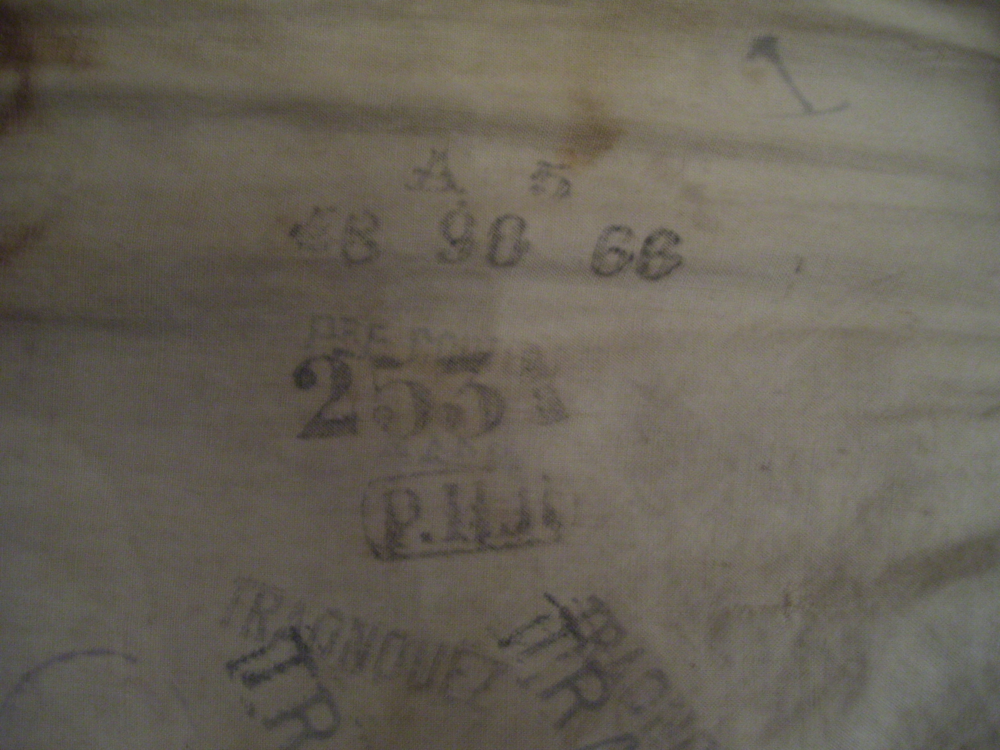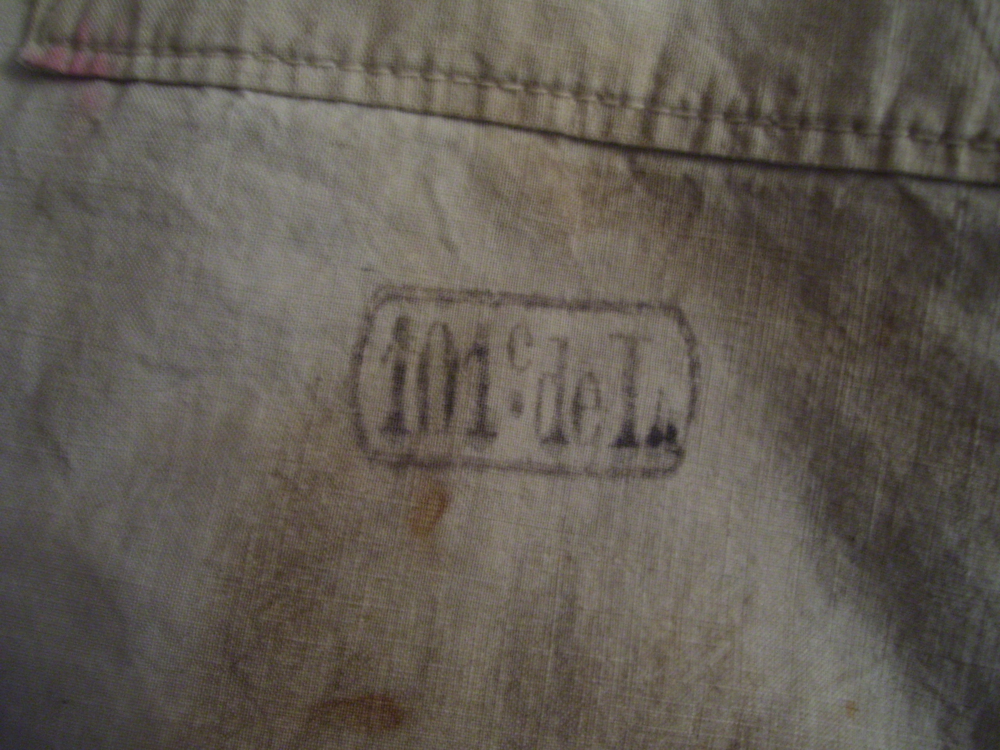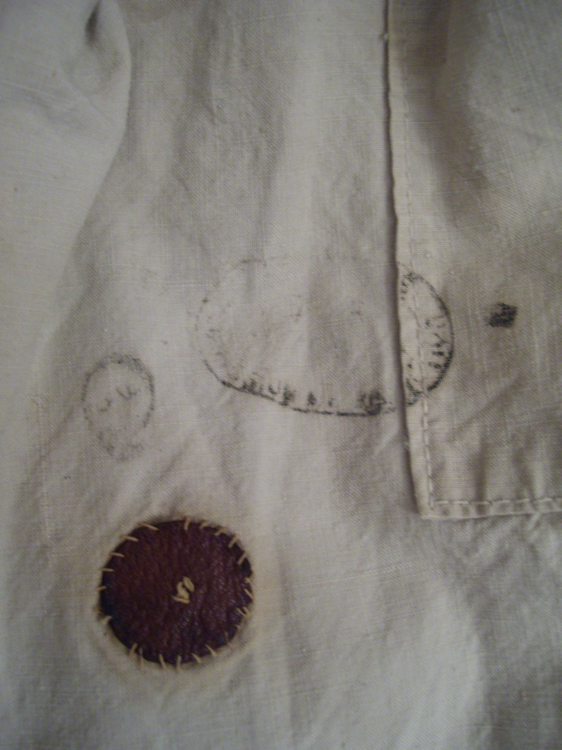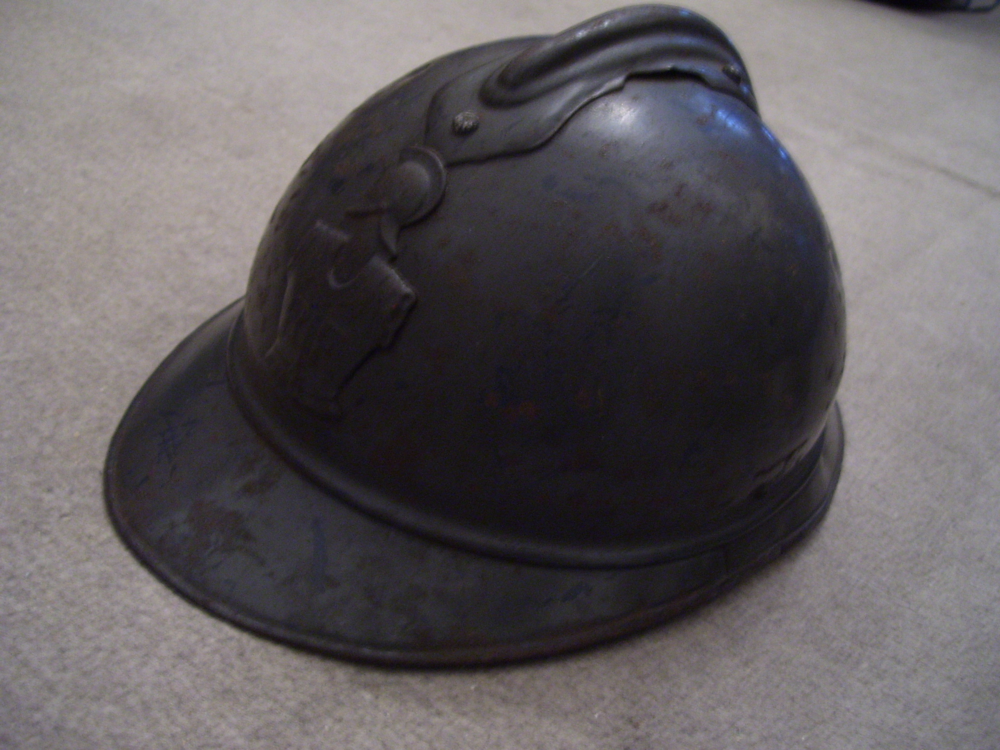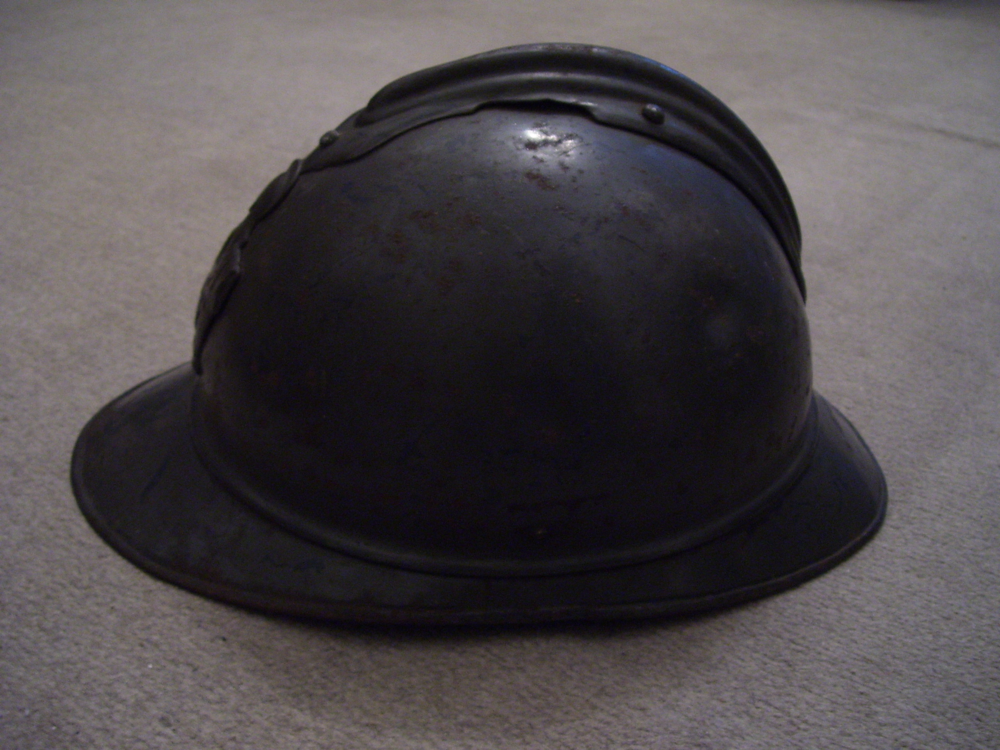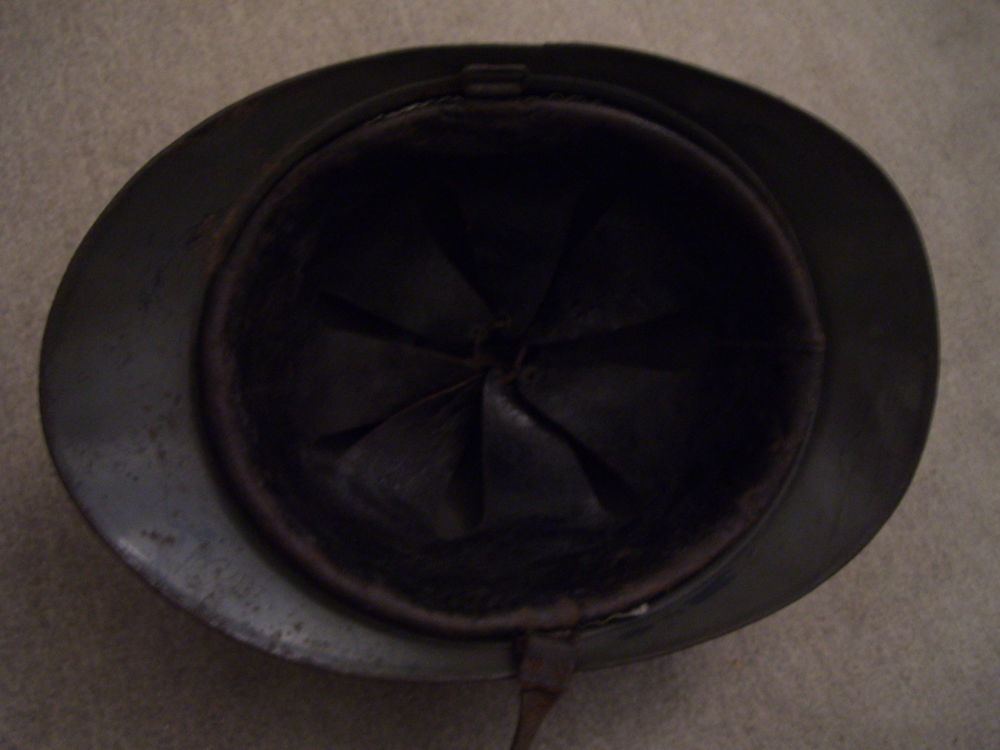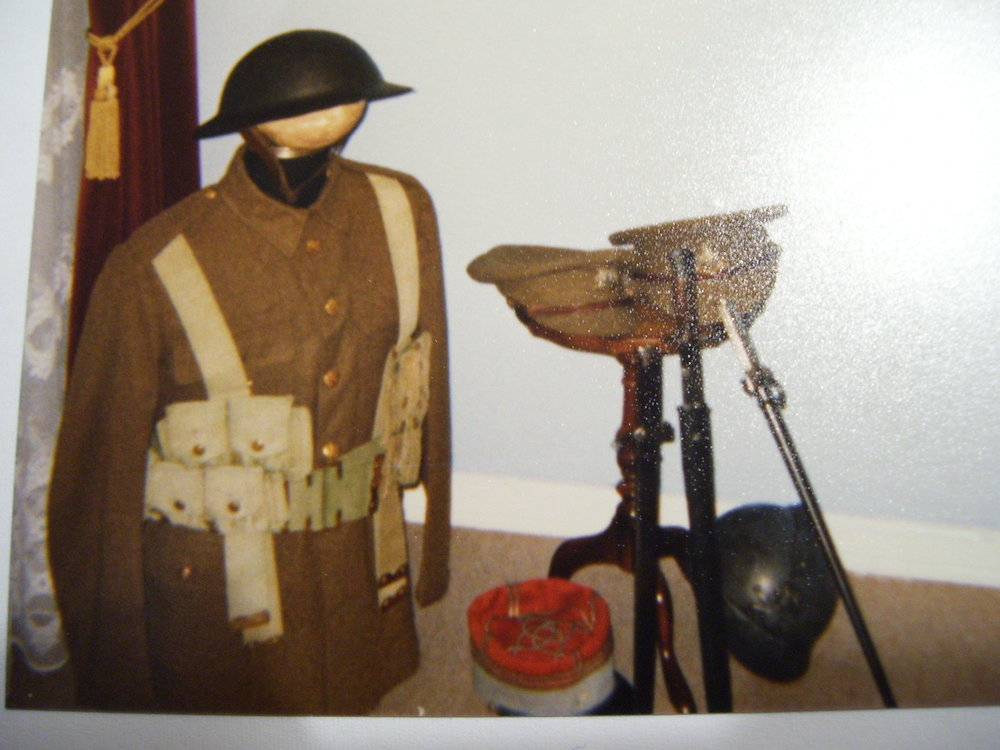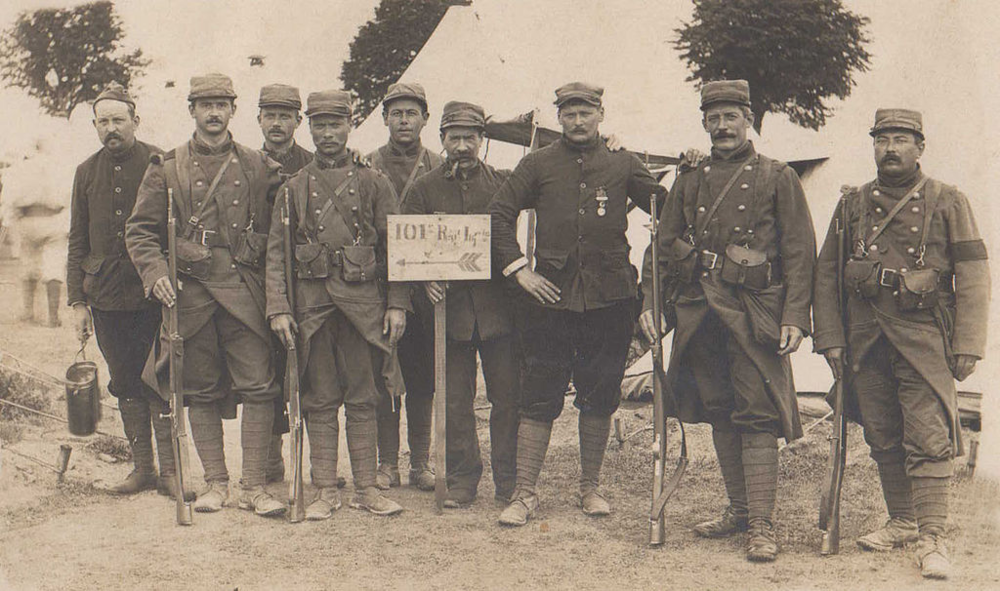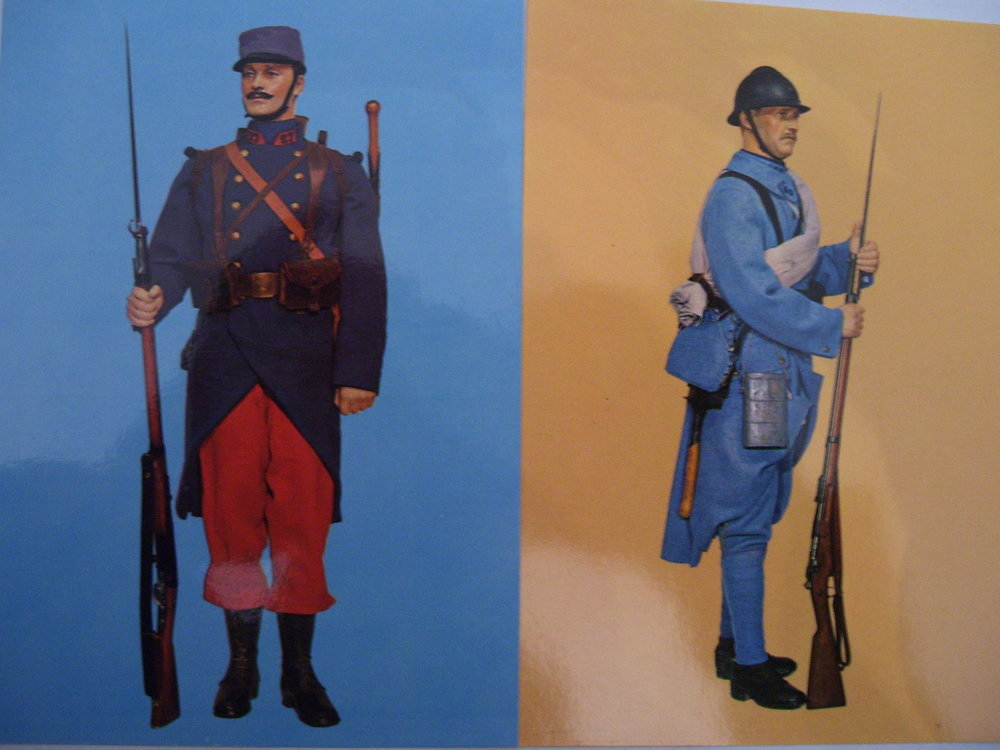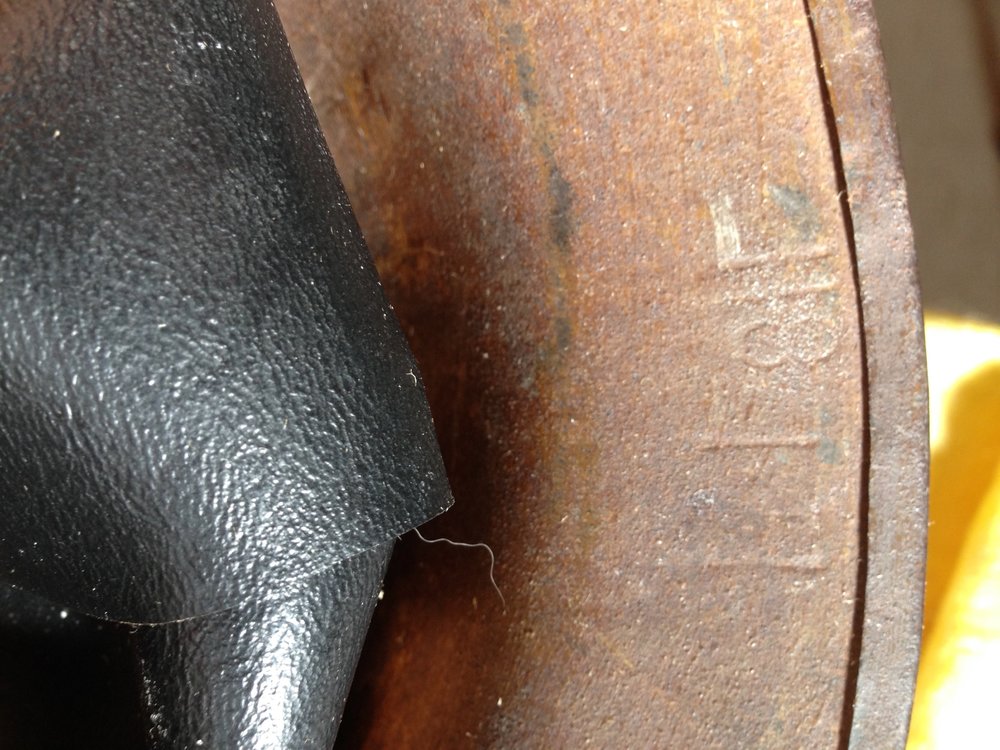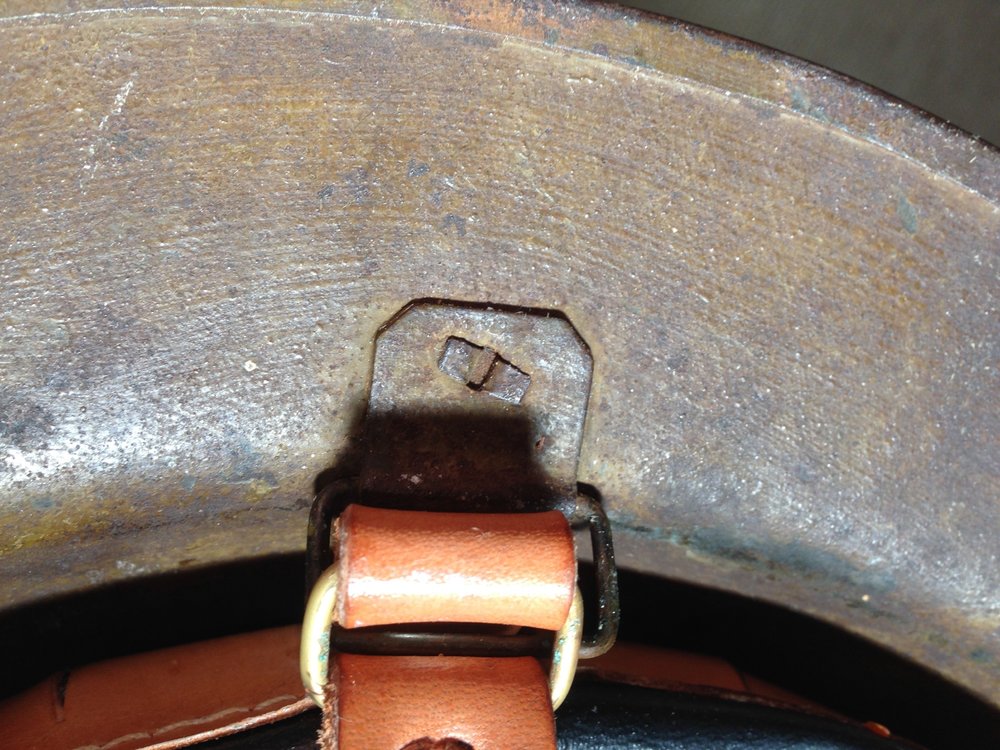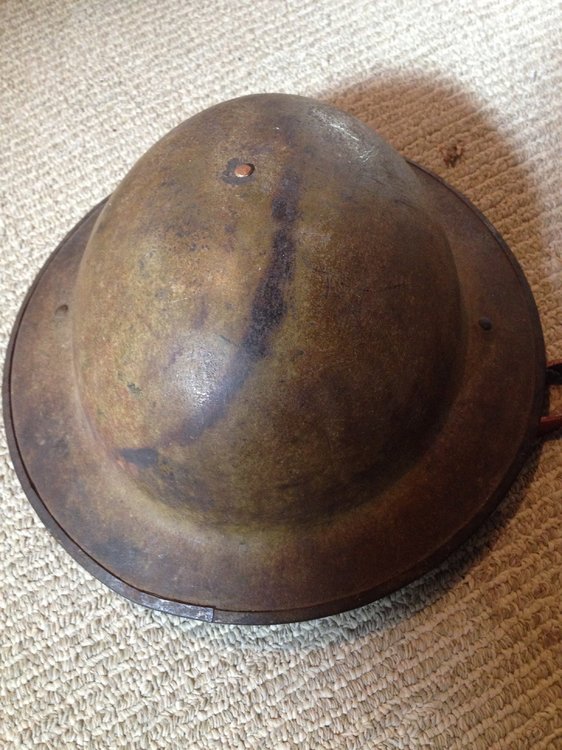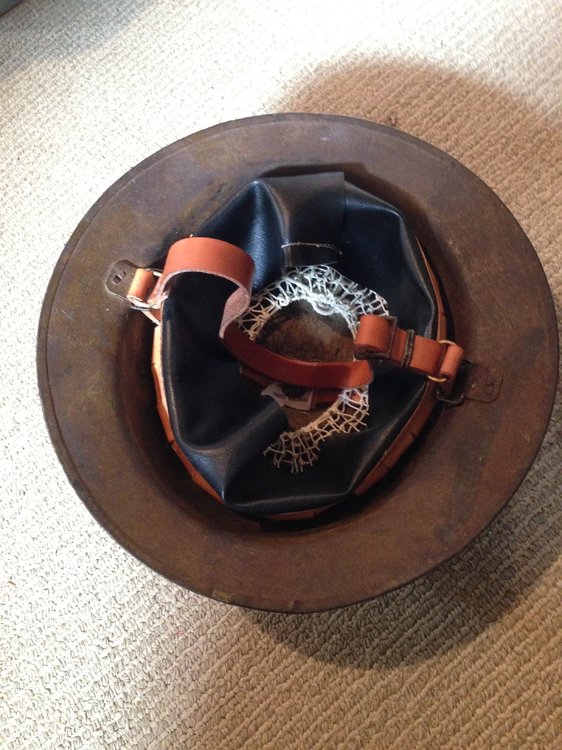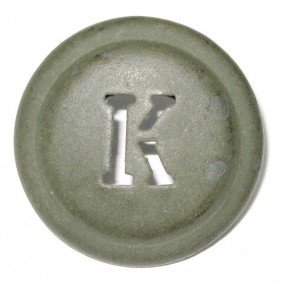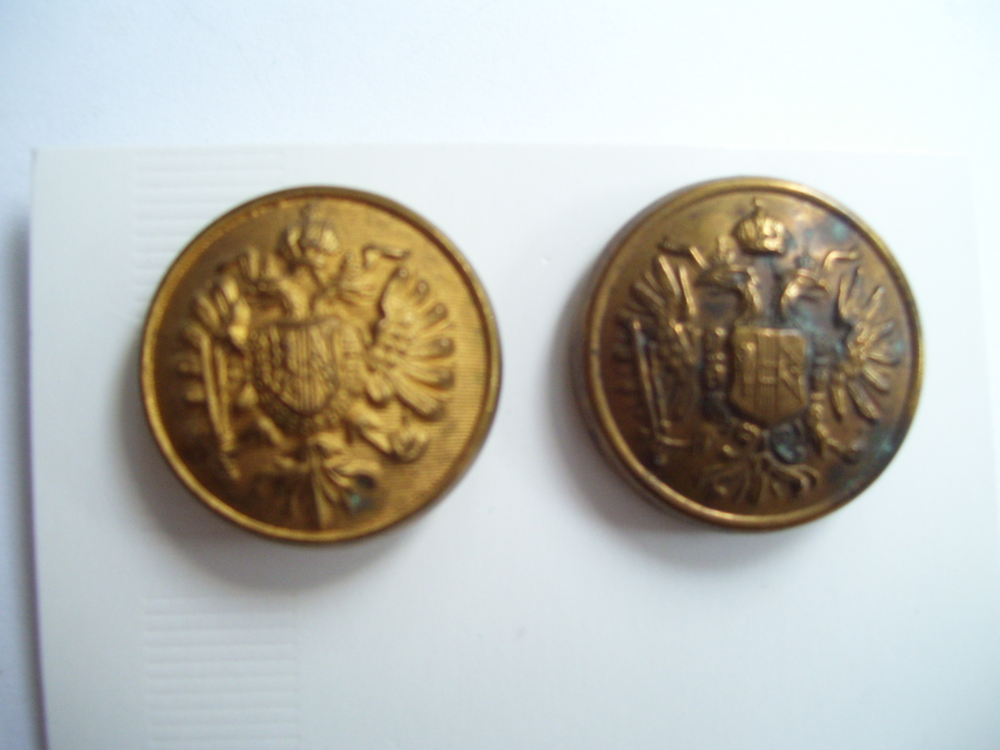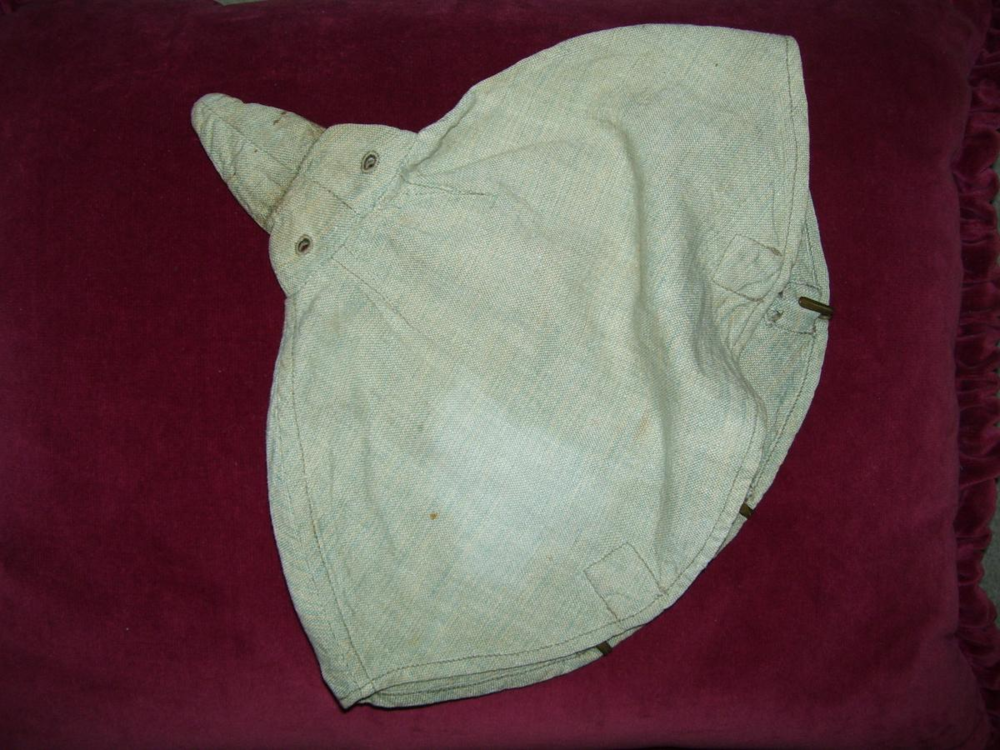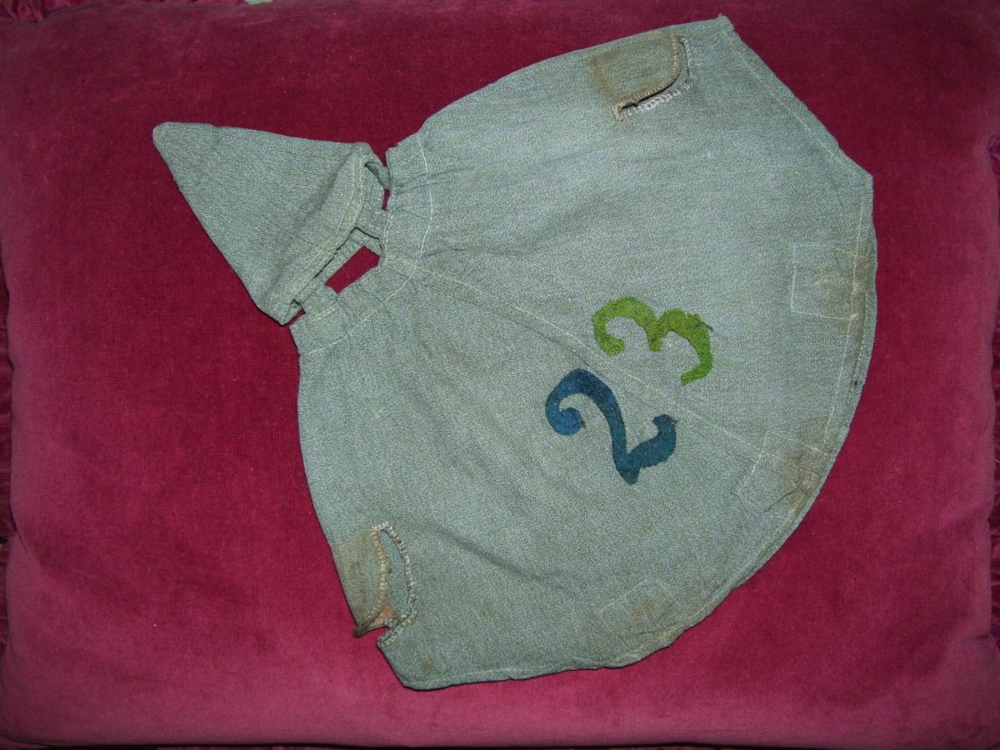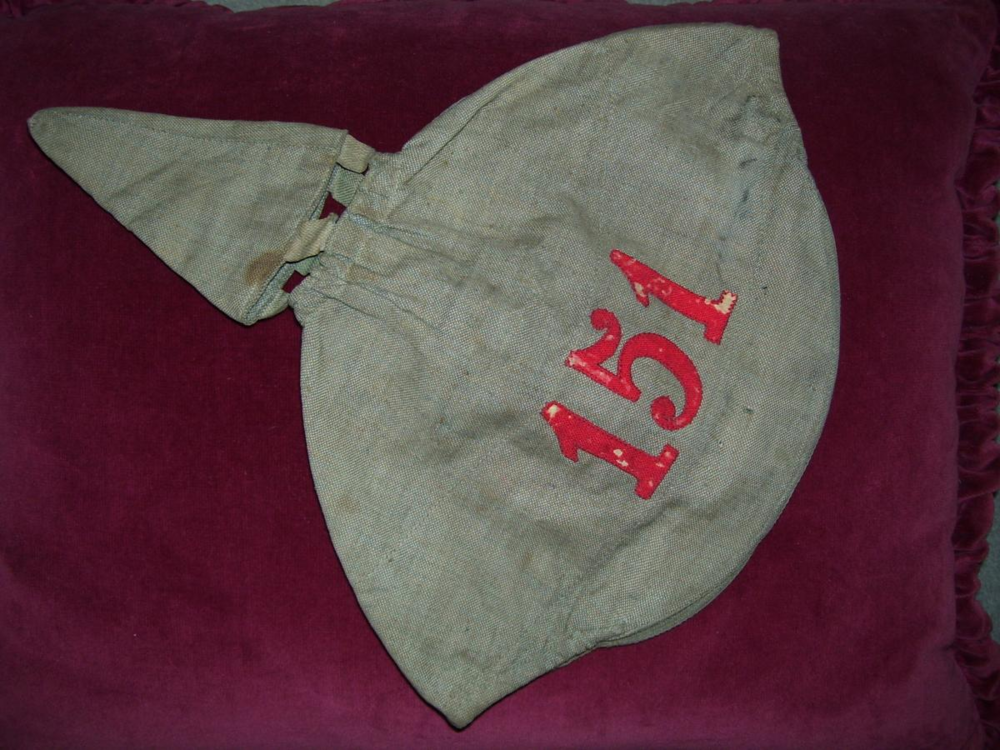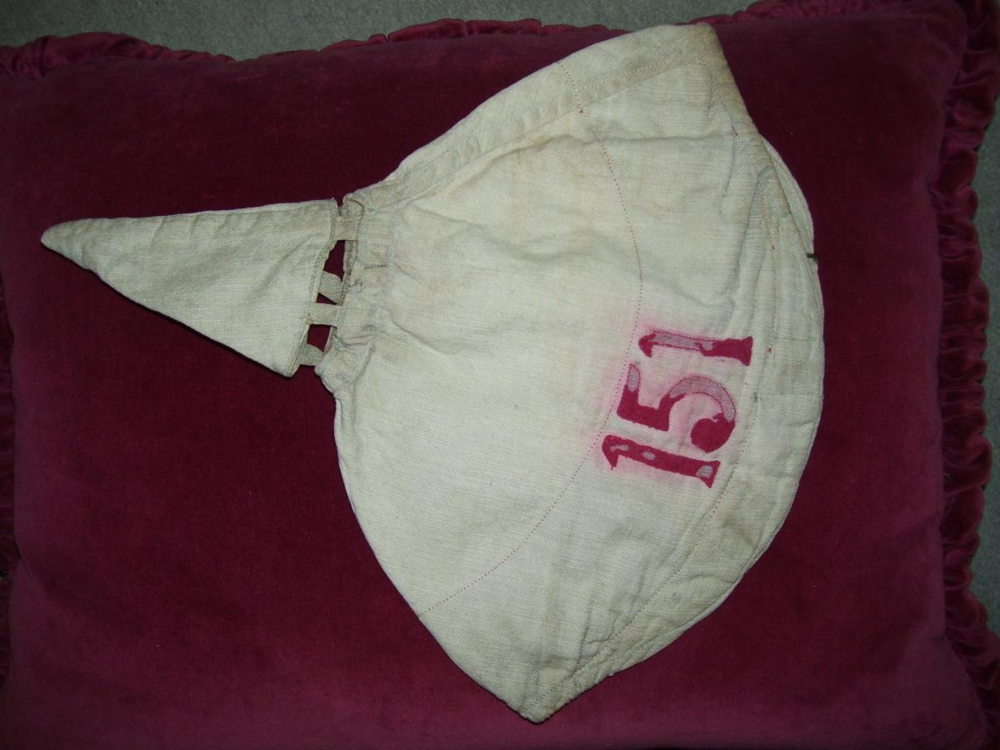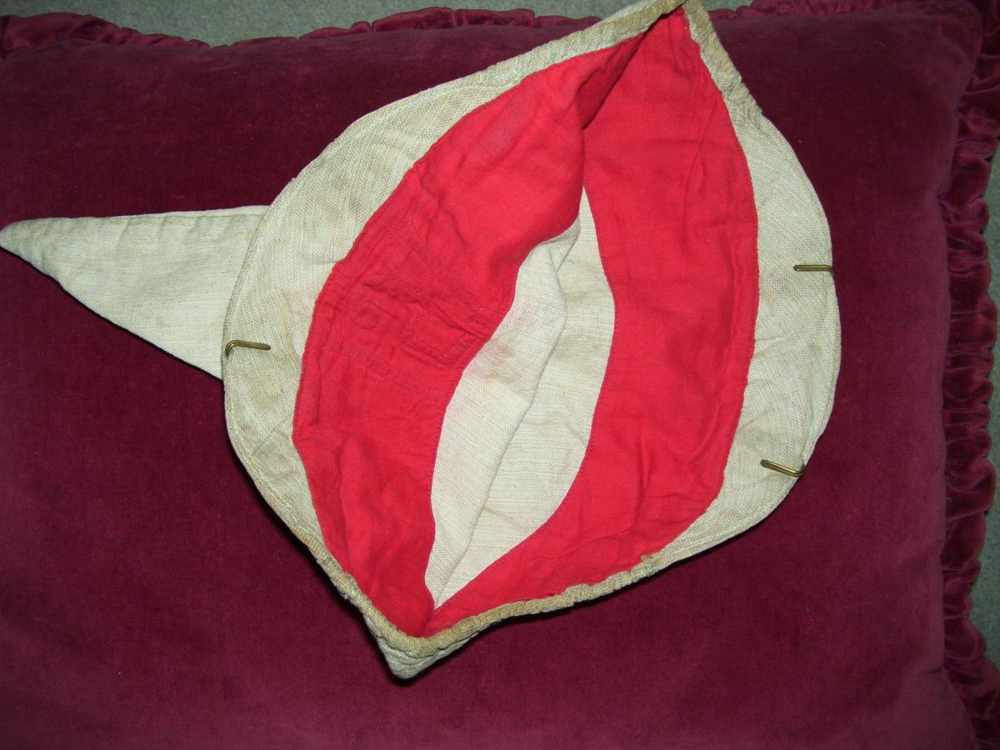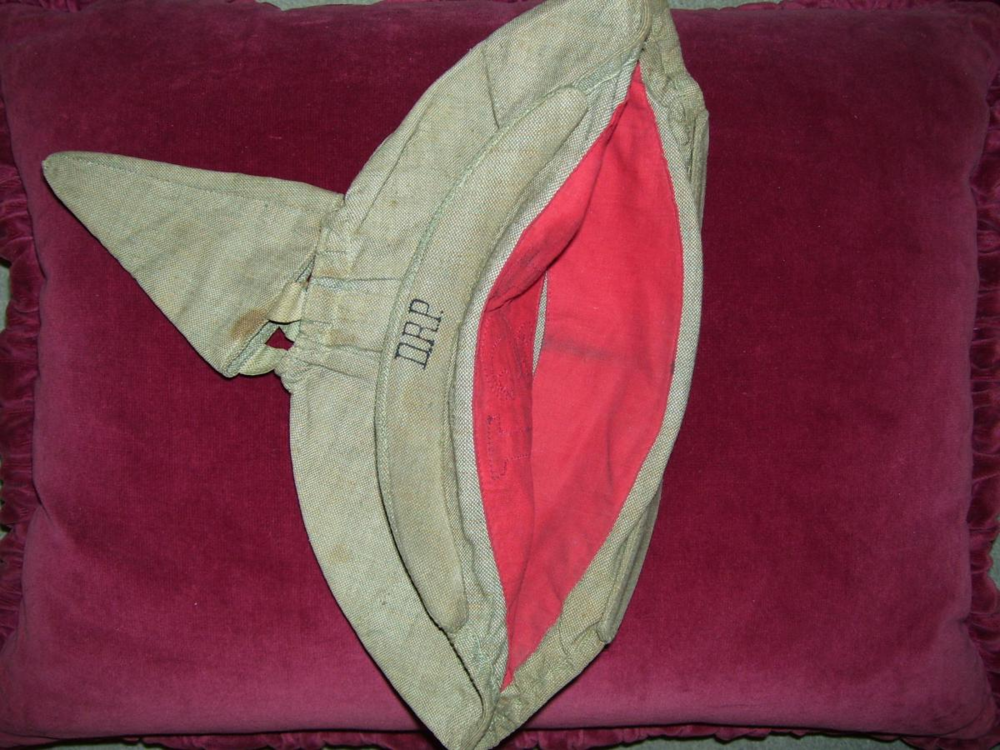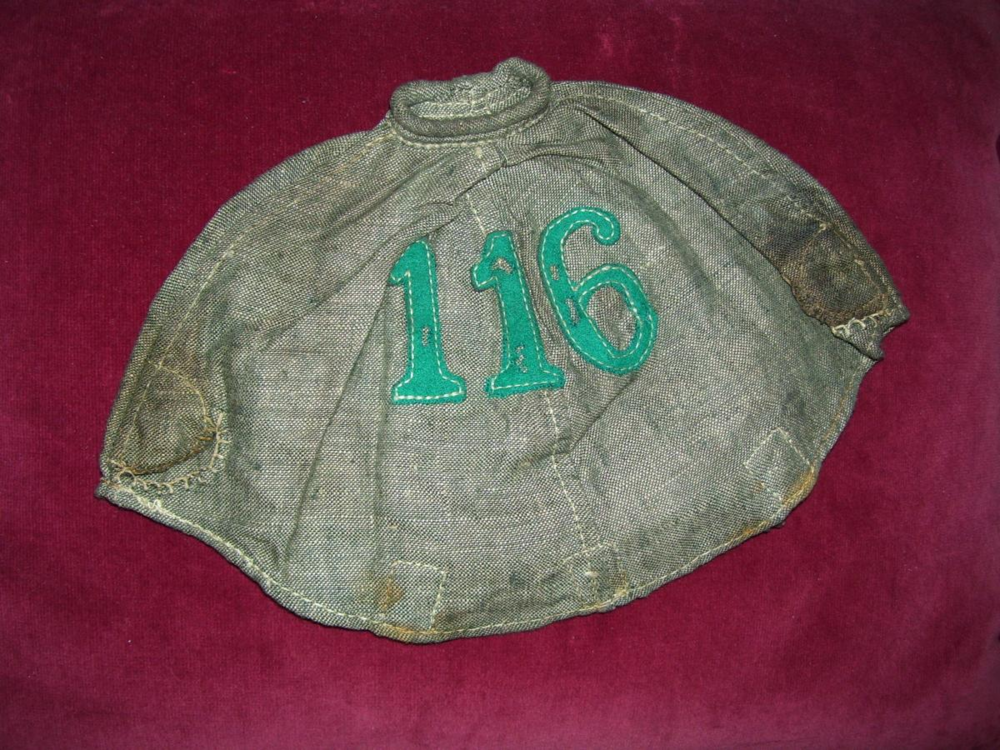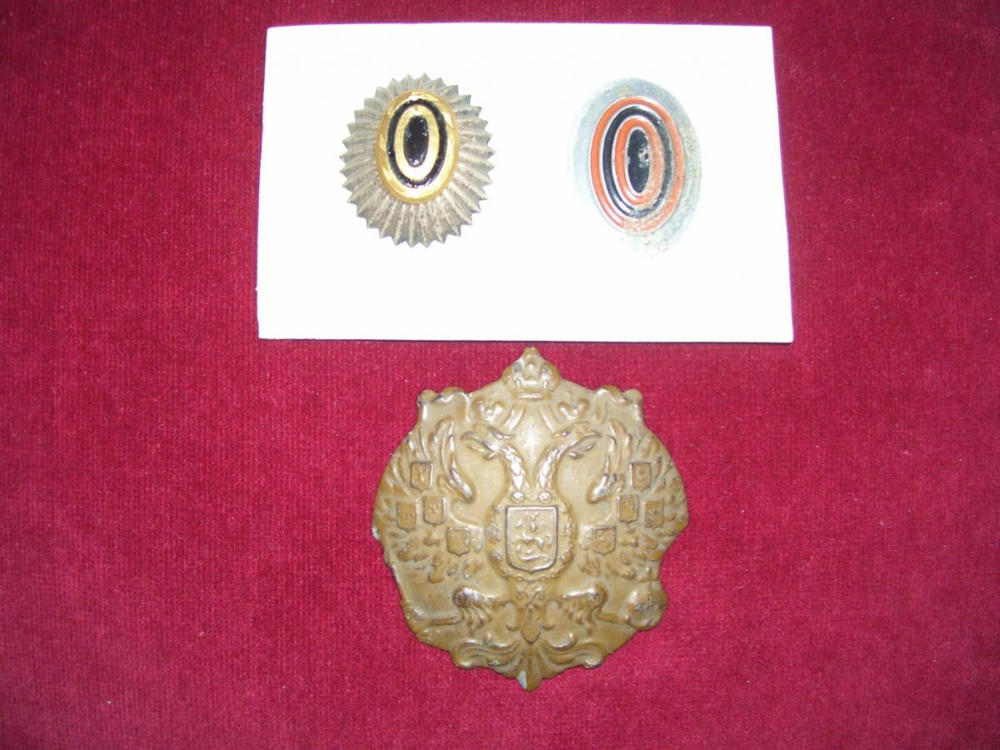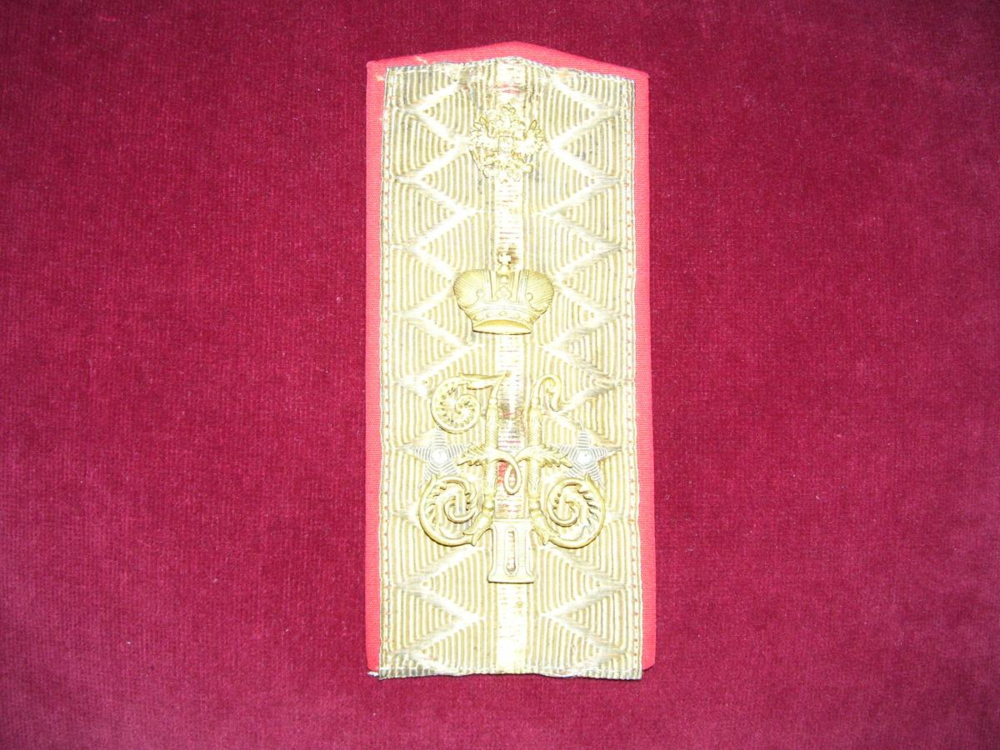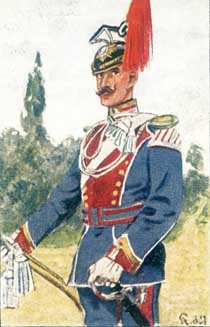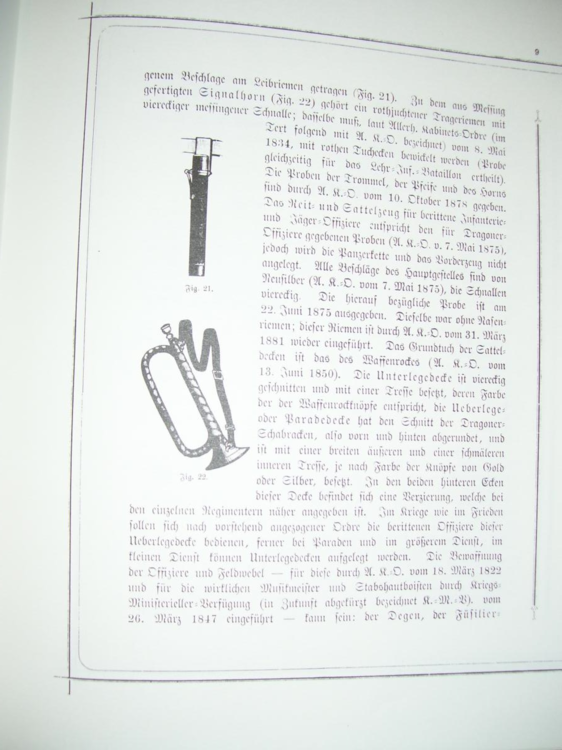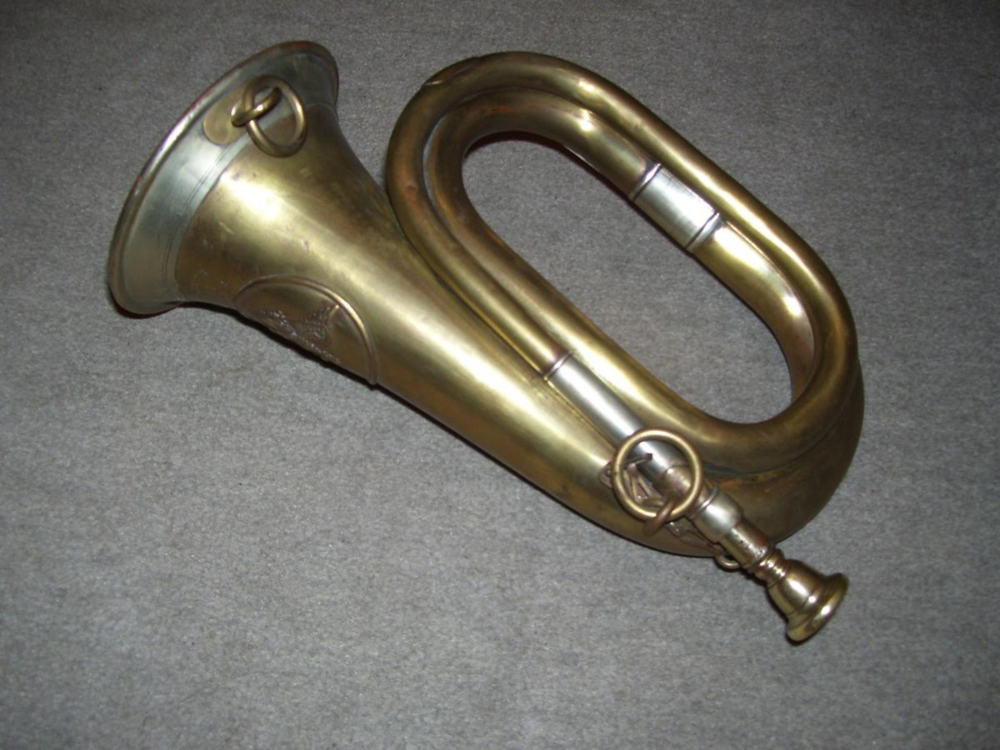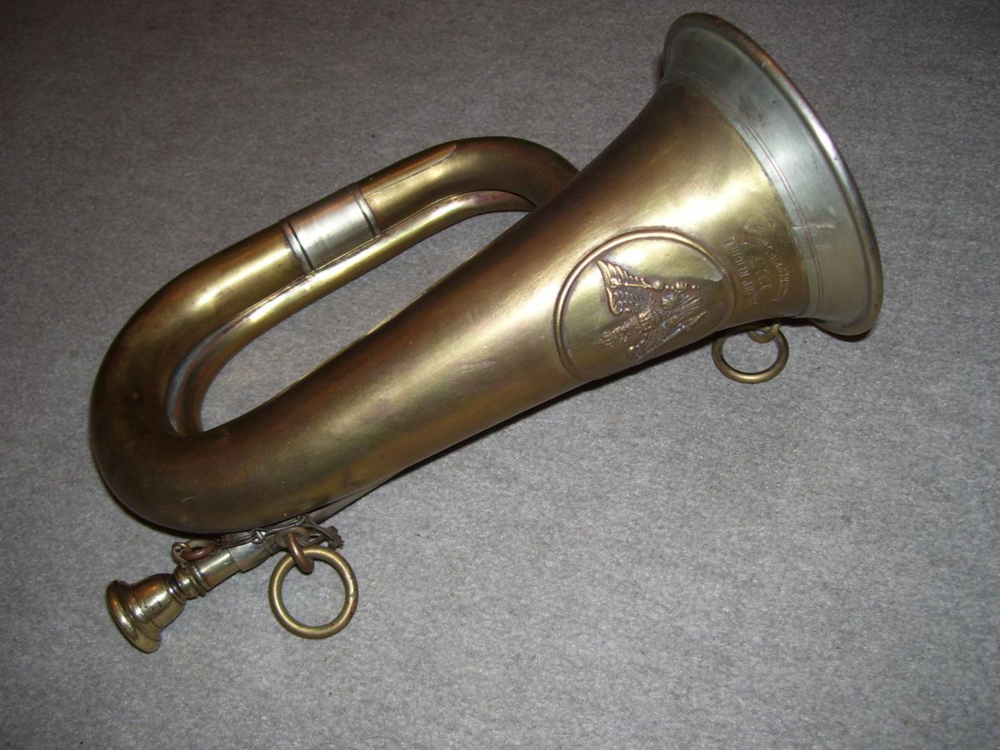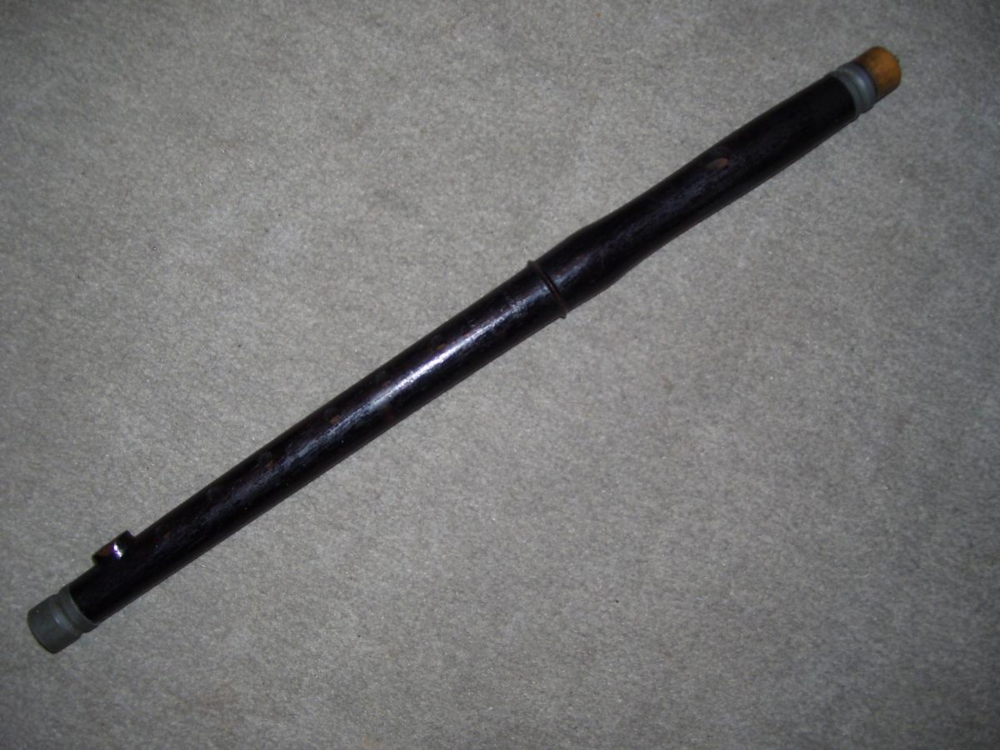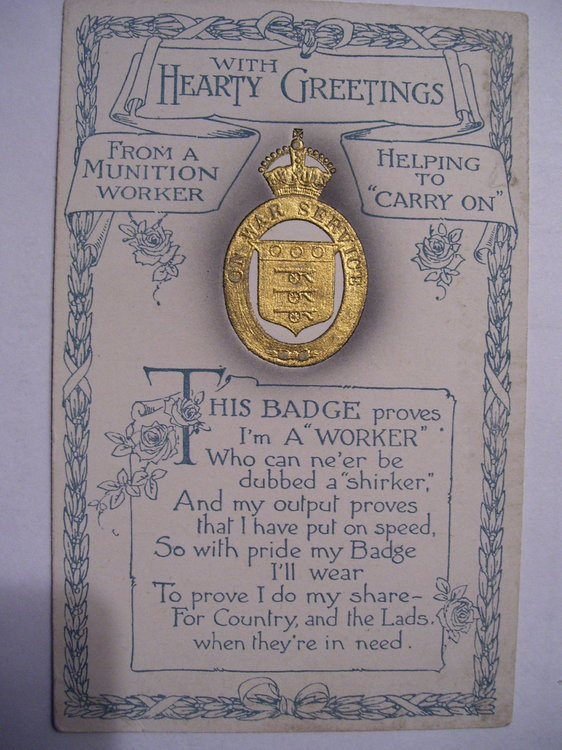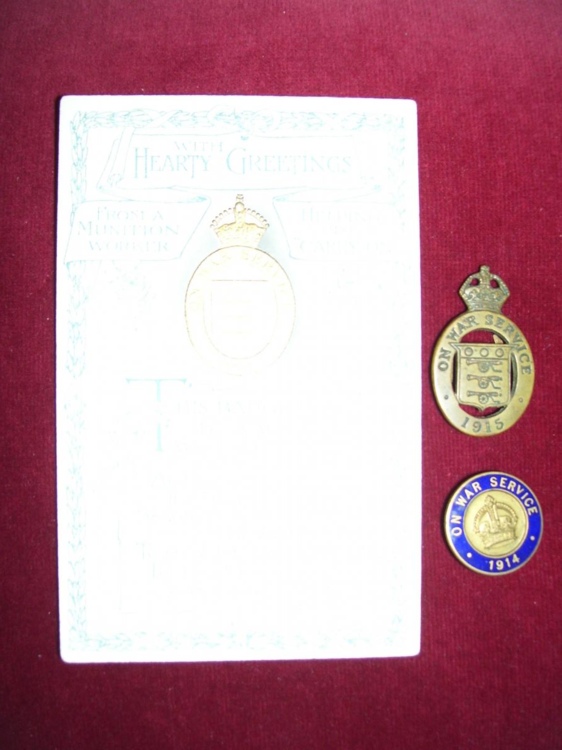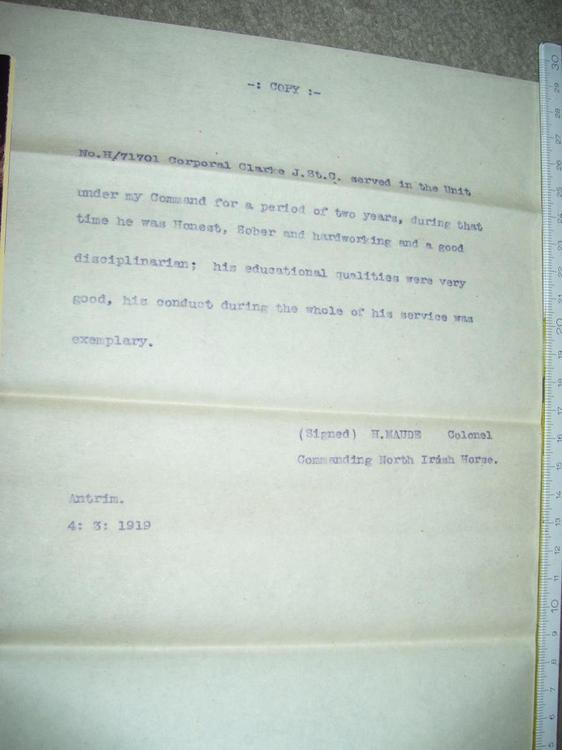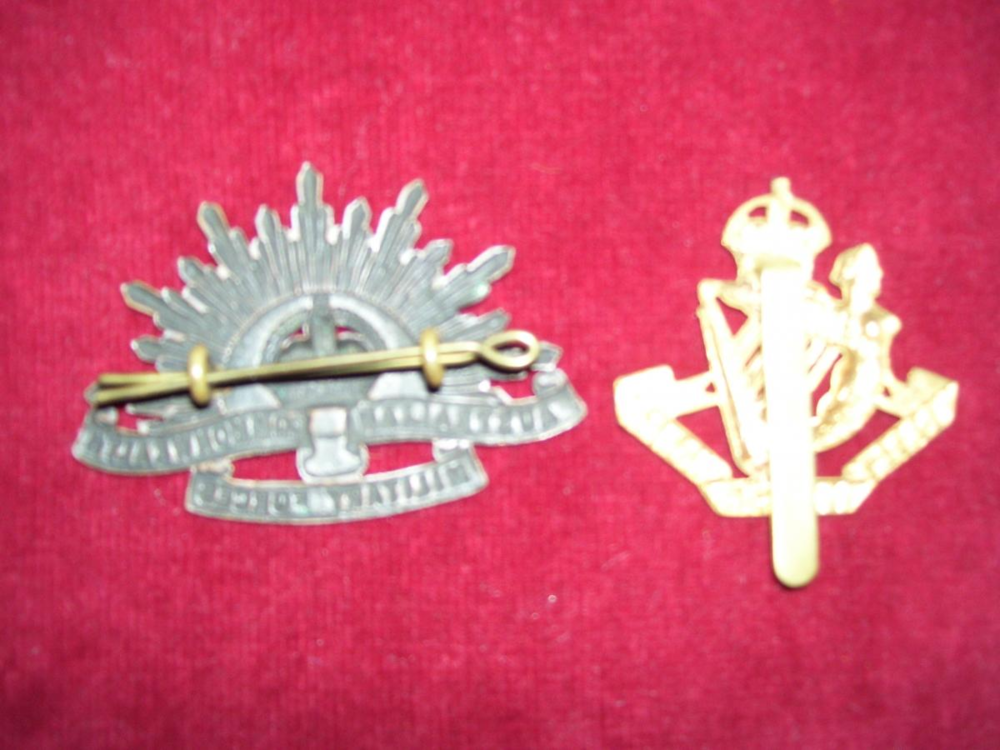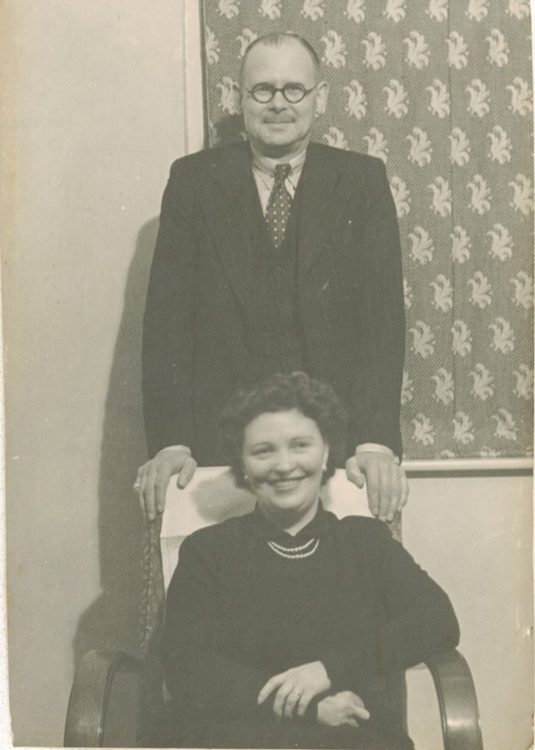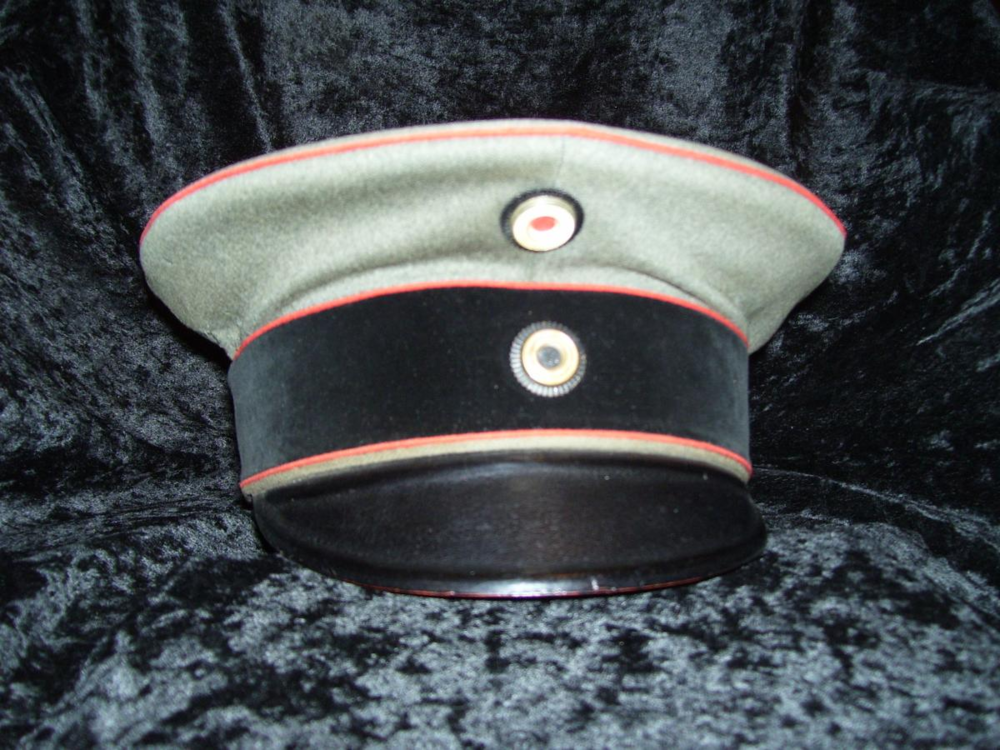Search the Community
Showing results for tags 'ww1'.
-
Hello everyone. I recently acquired a Webley mkV that was issued in September of 1915 to the 14btn Royal Fusiliers on rack 1. I know the unit was at the Somme and Mametz Woods, but I haven’t been able to find much more. I was just wondering if anyone knows anything about the battalion, has related artifacts, or could tell me more about the Webley.
- 1 reply
-
- 3
-

-
- somme
- 14th welsh fusiliers
-
(and 2 more)
Tagged with:
-
Hey everyone! So today I came across a WW1 Tornister brand backpack that costs 47 bucks. Honestly I never thought about buying a backpack but it seemed to me very fair price. I always thought they would lot more expensive. Now I’m started to looking the other backpacks. I found a WW2 version that in better condition. But it costs $95. So more than a twice of ww1 one. (But I guess it is still fair price since ww2 stuff more expensive ) I am also interesting with WW1 era but not much as a WW2 ( like majority of people) but in other hand I decided to buy mostly because of the fair price and now I am raising the bar. And feel like if I buy the ww2 one I will miss the good opportunity ( if it is a good and not a typical price as I thought) buying both would be too much for me as a new collector and when there is many different thing to add to collection. (also my girlfriend would gone mad probably) So I need you guys to help me out. What is your opinions about that? First 5 photo from WW1 one that costs $47
-
Hello all ... To anyone interested, I have an EK 2 from WW1 and it bears all the hallmarks of being authentic; three-piece, magnetic core, maker's mark and right feel/look. However the ribbon seems unusual in that the white stripes adorning the edges seem thinner than the standard. The ribbon hangs from a kind of end-clasp with pin. It is stamped 'LW' which as far as I can tell was a genuine period maker of this medal but the exact name is not known. Can anyone out there explain the appearance of this ribbon and were there others like it? ... also, if by some chance anyone knows anything of this maker and can shed a little light on the matter I would be grateful. Thanks.
-
I inherited a small collection of (23) pre WWI Oscar Tellgmann, Eschwege black and white photographs, many signed and dated 1912. Also (1) Oscar Tellgmann cabinet card photograph and a blank German postcard. All inscriptions on the back of the photos are in pencil and appear to be in Oscar Tellgmann’s stylized hand. Fourteen photos have white, hand-inscribed numbers on photo front– characteristic of Tellgmann’s technique. Several photographs have a distinctive double lined “T” symbol or f-stop pencil notations inscribed on the back as well. One photo has an embossed logo and four others have a stamped logo in left back corner. I have researched Getty, Alamy and other online resources for O.T. images and only find one of the images I have. Samples attached. Would anyone be so kind as to advise what is the best way to proceed with the sale of these 100+ year old photos? Is an auction house the best way to go? Is an appraisal and authentication necessary? Are scans or cell phone images of both front and back necessary/acceptable? Sm., Med., or Lg? Would I need to establish a Venmo account? I am in the US. Any advice you are able to give would be most appreciated.
-

Heavy Austro-Hungarian 'Jam Pot' Grenade
Achtung Spitfire! posted a topic in De-activated and Antique Guns, Munitions and Fuzes
This is a real beast of a grenade & that's saying something because most Austro-Hungarian jobs are chunky.Weighing in at 1.3 kg. I know very little about it other than it being described as a 'Jam Pot' on account of its shape I imagine. A great addition to my Austro-Hungarian grenade collection now standing at 9 pieces. You can't beat a belt hook Manufacturers initials I reckon. It does have a safety cap but its beyond restoration. A pattern though for sure. Size comparison to the more common 'Heavy Schwere'- 1 reply
-
- 4
-

-
- grenade
- austro-hungarian
-
(and 1 more)
Tagged with:
-

WW1 Italian 86mm Thevenot Mortar Bomb?
Achtung Spitfire! posted a topic in De-activated and Antique Guns, Munitions and Fuzes
Just landed today. I've been told that it's a WW1 Italian 86mm Thevenot Mortar Bomb.I do know that there is other ordinance that also has that name. Can anyone tell me exactly what it is? Very much a relic but it's a survivor & hard to find I reckon so I'm pleased with it. Trawled the net for info but all I've been able to find is a single period photo of them next to the weapon which may be copyrighted so I won't post it. Any help with additional info would be appreciated. -

Italian WW1 Grenades
Achtung Spitfire! posted a topic in De-activated and Antique Guns, Munitions and Fuzes
I have a few Italian WW1 grenades and this is probably my favourite the Benaglia Rifle Grenade. I had to work hard on the wings because they were pretty badly corroded but soaking them in white vinegar,wire wooling and a careful use of a drimmel bought them back nicely. Like anything Italian I think it has lots of style -

WW1 French Bertrand Gas Grenade
Achtung Spitfire! posted a topic in De-activated and Antique Guns, Munitions and Fuzes
Here's a hard to find WW1 French Bertrand gas grenade. Tiny little thing just bigger than a golf ball. As I understand it it contained a glass orb inside it that was filled with gas that was prone to breaking before it was thrown so it wasn't popular with troops.Bought it a few months ago in relic condition & since then It's spent most of its time in white vinegar which is shifting the rust slowly but surely. Seeing some nice grey pig iron as the rust dissolves & I'm changing the vinegar every week or so because it turns black & murky & not so nice. I'm hoping another month will see it back to clean grey pig iron all over. Then its just a case of re wrapping it in some authentic looking wire and job done. Watch this space. -

WW1 French ' Grenade Contre fil Barbele'
Achtung Spitfire! posted a topic in De-activated and Antique Guns, Munitions and Fuzes
Here's a nice example of a French 'Grenade Contre fil Barbele'.This is a 1916 version which was larger than its predecessor containing 800g of Chedite. It's smaller brother contained 400g of Chedite It was basically a sheet metal cylinder with a wooden plug and a stick with a hollowed out centre containing a traction igniter. Its main use was for blowing up barbed wire. Pictured next to an M16 stick grenade for scale. -
Does anyone have any information on WWI German pocket watches such as this one. This watch was purchased in Munich in the 1990s and it is still working.
-
x The 1915 forage cap or "bonnet de police", usually not piped, this example has a dark blue piping associated with infantry, etc. With the piping and being of slightly finer quality, would have been for a junior officer or senior n.c.o. The cap is unlined, apart from a fine brown leather sweatband. Earlier examples had a white cotton lining. Vareuse type 1915, horizon blue. Missing are the collar patches with the regimental number. This is probably a late war issue, as it has survived in reasonable condition. Col droit, upstanding collar, general issue. Traces of insignia can be seen. Buttons were of pewter instead of previous brass. The collar has a black liner and some small round metal buttons for attaching a white collar liner if required. The collar patches were in matching horizon blue with dark blue applied numbers, at each outer edge was a double soutâche in thin dark blue braid. Plain straight pocket flats without button. A repair had to be done to the side of the pocket, as it was torn. The cuffs seem to have been altered at some stage. On the left rear is a small buttoned loop for supporting the belt Rear view, 2 side pleats as always. Liner of rough white cotton, staining. Various issue stamps and a property stamp of Traonouez, a major French film requisites company Various issue stamps Regimental stamp of 101e Régiment de Ligne More issue or manufacturer stamps and a leather reinforcement for the belt loop Soldiers of the 101e Régiment de Ligne, 1915 Photos, Musée de l'Armée, Paris Some articles of equipment, 1893/14 type belt with bayonet frog, Y-straps and one of 3 cartridge pouches, 2 of which were worn front and one central rear, these hooked onto the wire attachments on the Y-straps. This was still standard in 1939/40, although new 2-pocket pouches were introduced. Two-prong brass buckle on belt, fittings were also made of iron as from 1915. Ceinturon Bretelles Cartouchière / boîte à cartouche Baionette Lebel Berthier avec fourreau Gusset de Baionette Standard M.1915 Adrien helmet with badge for Génie / Engineers. Original liner, coloured cloth edging missing, original chinstrap has been replaced by a two-piece strap, half remaining. The colour was changed from horizon blue to khaki around 1935, this has a greygreen overpaint for WW2, the horizon blue still visible in places. A charger clip for 8mm Lebel-Berthier cartridges. Lebel M.1886/93 8mm and Lebel-Berthier 1915 8mm (ex archive photo of my collection) Centre: Berthier carbine 1916 for cavalry, artillery, etc. (ex archive photo of my collection) Some items previously owned included this artillery steel helmet, a képi for a capitaine, 14e Régiment d' Hussards and 2 WW1 French bayonets (ex archive photo of my collection)
-
Hello Everyone, I’m new to this. I’ve got a few questions about a helmet I bought many years ago. It has a new liner (reproduction) but I’d like to be sure what the shell is. I found it in the US. It seems to be a First World War Brodie. Reading this forum was very helpful. There's a wealth of expertise here! So here’s what I noticed: • It has the split pins to attach chin strap and the liner, with soldered hoops. The hoops came with the helmet. • The paint looks very original, with brush marks, and some attempt at camouflage. It has the sandy finish. • A stamping appears on the inner rim. It seems to be 118 and then it has a large I with a 4 and another large I. I hope the pictures show what I mean. • The brown felt pad at the top seems to have a rubber donut under it, as far as my prying fingers can tell, which would make it 1917 or later, I think? Any advice is most gratefully accepted. Best wishes, Allan
-
Austria-Hungary / k.u.k. Monarchie Not much to show so far, fieldgrey cockade arrived today: An Austrian M.95 Steyr bayonet as already featured under bayonets. An officer's Portépée with monogram FJ, worn till December 1916, very fine quality gold wire woven and embroidered, strap with white saffian leather underlay, heavy item compared to the sword it was attached to. An Austrian belt buckle, looks a little new, originality uncertain. A Kappenrose, hollow brass with cut-out monogram IFJ for Franz Joseph I, rear with double prongs A Kappenrose, fieldgrey with cut-out monogram K for Karl, as from December 1916, rear with two retaining loops 2 k.u.k. uniform buttons, most likely of a civil or state uniform, 20mm, fire-gilded bronze, one button considerably darkened One button has simply WIEN, the other EXTRA RICH and Imperial Eagle above.
-
Transferred to new article under "fieldgrey"
-
Field grey infantry peaked cap with patent leather strap. Cap could be either for Hessen, I.R. 115, 116, 117, 118 or 168. In very clean, fresh condition, fine doeskin cloth, brown waxcloth sweatband, slight traces of wear to inside, only very slight traces of mothing, ca. 1914-16 - over 100 years old. Purchased in early 1968 in Londons Portobello Road for only 5 pounds!
-
Officer losses: Originally a newspaper cutting from an early post-WW1 newspaper, discovered in an old book. This is an epitaph to all officers of Ostpreußisches Grenadier-Regiment No. 3, who fell in the 1914-1918 war. The regiment was based in Königsberg i./Pr., present day Russia. The document is undersigned in the Name of the Officer Corps of the former Grenadier-Regiment König Friedrich Wilhelm I. (Ostprpeuß.) No.3 van den Bergh - Oberst und Regimentskommandeur - The losses listed are officers only. Apart from this, over 5.490 ncos and other ranks fell. Exact date of newspaper cutting cannot be assessed, probably early to mid 1920s. Two photos, due to length.
-
Various German helmet covers as from 1892: First model helmet cover with attached spike and leather spike lining, brass hooks, no numbers, very pale sandy rush coloured material Wartime model, 1914/15, a slightly taller, non removable spike, the peak has squared corners, possibly for a Bavarian nco, green wartime numbers -23- re-attached, iron hooks, side-slits for chinstrap. 2 helmet covers from estate of same wearer - older light sandy colour with dark red numerals -151- inner red band for reversal for wear on manoeuvres if required, brass attachment hooks, one of which is missing. Further cover in mixed colours more of a fieldgrey with bright red numerals -151- Inside is a red manoeuvre band, DRP patent flaps to front and rear, typical of later officers covers. Definitely early WW1 period for so-called Ausmarschuniform 1914. Further pictures show the manoeuvre bands inside. J.R. 151 was part of the 37. Div., and was based in Sensburg, II. Btl., in Bischofsburg in East Prussia, and took part in the Battle of Tannenberg in Autumn 1914 remaining on the Eastern Front till December 1917, when it was transferred to the Western Front, taking part in the battles in the Champagne region in Spring of 1917, later involved in the fighting in the Verdun area in August and September 1918. Helmet cover after September 1915, with separate spike, now missing, for Infanterie-Regt. 116, green numerals original machine-stiched, mixed greygreen fabric with leather-reinforced side slits. J.R. 116 was involved in the heavy battles at Verdun in 1916. Helmet cover 1897-1914 - with red cloth numerals for Grenadier-Regiment 5, as worn at outbreak of war. In 1892 cloth covers were introduced for manoevre and field wear. As from 22. March 1897 red numbers were introduced for all headdress, excluding Guards regiments, which bore no number. In Spring 1914 numbers were to be changed to green. Since the outbreak of hositilies, orders were sometimes given to remove the numbers in the field, counter-orders stated to re-place the numerals, there was a lot of confusion on this, sometimes the numbers were then painted or stencilled back on. German = Helmüberzug, (pl.: Helmüberzüge) Early 1892 cover with old form of spike construction with a leather lining, still without numbers as applied in 1897. The Guards regiments wore no numbers. A 1915 fieldgrey cover with non-removable long spike and and square peak corners. Numbers have been removed and re-applied at some stage, as per field orders, which were given as order and counter order. A later example as worn Summer 1914. Reversable interior with red manoevre band and stamped D.R.P. (Deutsches Reichspatent) An early example after 1897 Inside (reversable) with red manoevre band, this example is with brass hooks A model 1897 cover with regiments number 5, possibly Grenadier-Regt.5 or 5. Bayerisches Infanterie-Regt.? Fieldgrey cover for Infanterie-Regt.116 as per the Sept.1915 regulations, and with removable spike (missing), leather reinforced side slits
-
Unteroffizier Ernst Weckerling from Infanterie-Regiment 81, born 1897 One hundred years ago the battle of Verdun was being fought. It was there that the Germans had developed a plan to break the stalemate of the trenches: they were going to to bleed the French white by inflicting disproportional losses on them. The target was Verdun, a prestigious city fortress that had protected France in many occassions before. First-hand accounts of survivors of this battle are a bit on the rare side, let alone veterans who were recorded telling of their experiences. One such man was Unteroffizier Ernst Weckerling, who appeared in the PBS documentary "People's Century" sporting the famous German Pickelhaube. (quora.com) Unteroffizier Franz Weckerling of Füsilier-Regiment 80 in a late interview. He is wearing an officer's helmet, which would not have been appropriate, probably later acquired. Robert Meier, 1897-2007, Germany's Former Oldest Living Man and a WWI veteran Author German Werth - eye witness reports on Verdun, including interview with Ernst Weckerling and several others.
-
2 British postcards with Christmas Greetings, undated, unwritten, WW1 period A Queen Mary Christmas Fund gift for the troops, Christmas 1914, gilt brass cigarette tin, which once contained cigarettes or tobacco, a greeting card from Queen Mary with portrait., now empty. A cigar case, black-lacquered iron with a medallion portrait to top left corner of Crownprince Wilhelm. To the rear of the tin is a silver inlaid inscription,V. Armee - Weihnachten 1916 Kronprinz Wilhelm was nominal commander of the Armeegruppe Kronprinz in the Verdun area. Slight damage to one edge of portrait. A few items with a Christmas spirit.
-
A few items of Imperial Russian Militaria from the times dating till 1917. I had quite a few items in the old days, these are all that remain, apart from a belt buckle, later to follow. Cockades in the Tsarist Romanow colours for the peaked or peakless field cap or the Papaschka (fur cap worn in the Winter). The cockade on the left is for officers, and for other ranks on the right. A further item is a French manufactured Russian Imperial emblem for the M.1915 Adrian helmet, with almost all of its orginal khaki finish. Only about 300.000 of these helmets were delivered to the Russian army and these were mostly worn on the Mesopotamian Front. Quite rare. This example came from an antique shop near the university in Hamburg many years ago. Just a surprise find. The last item is a single shoulder strap for an officer, Подпору́чик - Podporuchik (Unterleutnant) of Leib Grenadier Regiment 113, which bears the monogram of Tsar Nikolai II. This regiment was based in Kronstadt in the present day Baltic States. The button on this example is missing, but has been replaced by an Imperial Eagle originating from such a button. After the October Revolution in 1917 all symbols were removed from the uniforms. Many regiments had mutinied against the Tsar and went over to the Bolscheviks.
-
Examples of a Bugle and a flute as issued to company musicians in the field. The Bugle - Signalhorn M.1889 has maker marks of Philipp Reichel, Markneukirchen, 1915. To the front is a medallion bearing the Prussian heraldic eagle with sceptre and sword. There are two suspension rings for attaching a dark red leather adjustable strap with a sliding buckle. The bugle was always worn with a covering of red felt wrappings, later fieldgrey. This item was restored by a wind instrument maker, and this cost more than the item itself. This item was carried by buglers in the foot regiments. Cavalry trumpets were longer. A company in the field had several buglers. A bugler accompanied the commanding officers in the field to transmit signals for advance, retreat, etc. A drummer was also always present, to give the march tempo. A flute - Flöte, wooden with end pieces made of Zinc, normally of white metal. and manufactured by Philipp Reichel, Markneukirchen in 1917. This bears the makers mark, with the date stamp and an Imperial Eagle. These were always carried in a cylindrical leather container attached to the belt. This instrument was also issued to each bugler, so that marches and military music could be played on the march, together with drummers. Virtually Unchanged since the 18th Century. These instruments were also used by the Wehrmacht. Markneukirchen in Thüringen is still today, a centre for the (cottage-industry) manufacture of traditional music instruments. Last illustration depicts the flute in it's belt-container and the (old pattern) bugle as worn with strap and covering. Illustration and text from "Das Deutsche Reichsheer" by Krickel & Lange, Berlin o.J. (1892) The cavalry trumpet was considerably longer
-

Gew.98 accessory - Mündungsschoner
Fritz posted a topic in De-activated and Antique Guns, Munitions and Fuzes
Muzzle cover - Mündungsschoner for a WW1 Gew 98 rifle. Strangely enough this will not fit the WW1 Kar 98a, but only the G.98 (and also WW2 K.98) Unlike the mass-produced WW2 examples, this is a piece that is manufactured with ultimate precision, just like a fine weapon, so is not just a cheap throwaway accessory. Theoreticly every G.98 should have had one of these. The muzzle front has a hinged flap, to enable the rifle to be fired without removing the cover. A steel arch fits neatly over the front sight, without hindering the aim. To the rear is a concealed spring fitting, enabling the object to be set on the barrel/front sight, or again to be removed. There are two small arsenal markings on the back of the arch, a crowned B cypher and below this, a T, significance of which I do not know. Some slight rust staining in places. These are sometimes seen in WW1 photographs. The Mündungsschoner protected the muzzle not just against rain and dirt, but could also prevent physical damage to same. A rare accessory for the G.98 and hard to obtain. First one I have seen so-far, and in my possession for several years now. -
Two British WW1 On War Service Badges, version 1914 and 1915. These were for munitions and other indispensible workers, who for the moment were not to be conscripted, although conscription was not introduced till Janaury 1916. This was for other moral reasons, as often young men of military service age, when seen in civilian dress seemed morally obliged to volunteer for active service. A further badge was introduced in 1916, triangular in shape. Each badge had a serial number to the rear. The 1915 badge is accompanied by a souvenir postcard depicting that emblem. The card is titled with "Hearty Greetings" - "From a Munition worker - Helping to carry on". The text starts with: "This is Badge proves I'm a worker, Who can ne'er be dubbed a shirker, And my output proves that I have put on speed, So with pride my Badge I'll wear To prove I do my share - For Country and the Lads, when they're in need." Unfortunately, again poor photo quality.
-
One badge, which has always been in my father's possession is the badge of the Australian Commonwealth Military Forces - a bronze example from WW1. It had belonged to his uncle - I think his name was Hughes, and he served in the Australian Army during WW1, unforunately, have no record of service. The second badge I purchased myself, a similar one had been worn by my uncle, John St.Claire Clarke, born in 1897 at The Cottage, Antrim. He had served with the North Irish Horse as a volunteer from 1915-1917, and had been invalided out, as far as I know. Unfortunately, I never saw any of his souvenirs of that service. My aunt always wanted to give me his medals and the two polished brass shellcases, which had been on the mantlepiece for many years. After my aunt passed away in 1979, we never came across said articles. Don't know what happened there. However, still have some of his papers, including a medical record from leaving Colonial Service in British West Africa, as a Colonial Officer, he had been infected with Malaria. That was in the 1920s in the postwar period. He was later an official in the Bank of England in London, thereafter, an official in local government offices in Stormont, N.I., until his retirement in 1962. The copies of the typed reference of service read: No.H./71701 Corporal Clarke, J.St.C. served in the unit under my command for a period of two years, duing that time he was Honest, Sober, and hardworking and a good disciplinarian; his educational qualities were very good, his conduct during the whole of his service was exemplary. (Signed) H. Maude, Colonel Commanding North Irish Horse Antrim, 4: 3: 1919 I always wanted to find out more about his service record. Apparently many records were destroyed during the "Blitz" in 1940. Some however have been restored, the damage was apparently not as total as originally estimated. I wonder which medals he had, possibly the War Medal, the Victory Medal, The 1914/15 Star, maybe the King's Badge and possibly more??? Does anyone perhaps have any more information on this subject? 2154 No overseas service * Enlisted 20 April 1916. Discharged 13 March 1918.
-
A good example of a Prussian Artillery officer's peaked cap for garrison wear, dating from around 1915/16. This has a stiffened top in fine lightweight fieldgrey ribbed cloth. The band is of black velvet, as were all officer's facings when black. Crown and and band are piped in bright red, the peak of black lacquered vulcan fibre, the peak inner is lacquered fieldgrey. As from September 1915 peaks were to be lacquered fieldgrey, but this was seldom followed. The sweat band is of flimsy light grey waxcloth, the lining is of light grey ribbed silk, with much staining and slight shredding, handwritten name : Tode. Both the Reichskokarde over the Prussian cockade. This cap was also for pioniers, technical and aviation troops, as well as field and foot artillery. A foam rubber strip has been inserted under the crown to keep it in shape (easily removed). Obtained many years ago from a Hamburg militaria dealer around 1979.


